Ararat - Dimboola
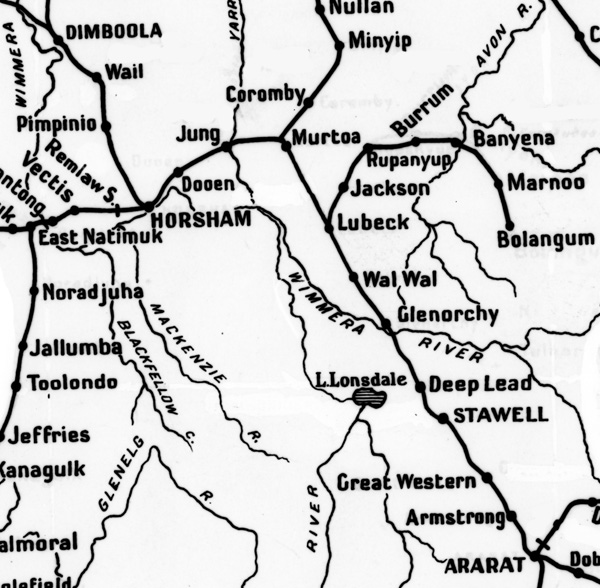
Ararat to Scallan's Hill (1 mile east of Stawell) opened Feb 15 1876
Scallan's Hill to Stawell opened April 14 1876
Stawell to Murtoa opened Dec 17 1878
Murtoa to Horsham opened Feb 5 1979
Horsham to Dimboola opened July 1 1882
Entire line converted to Standard Gauge and re-opened May 1995
Armstrong
1919 Signal Diagram
1940 Signal Diagram
Box Diagram
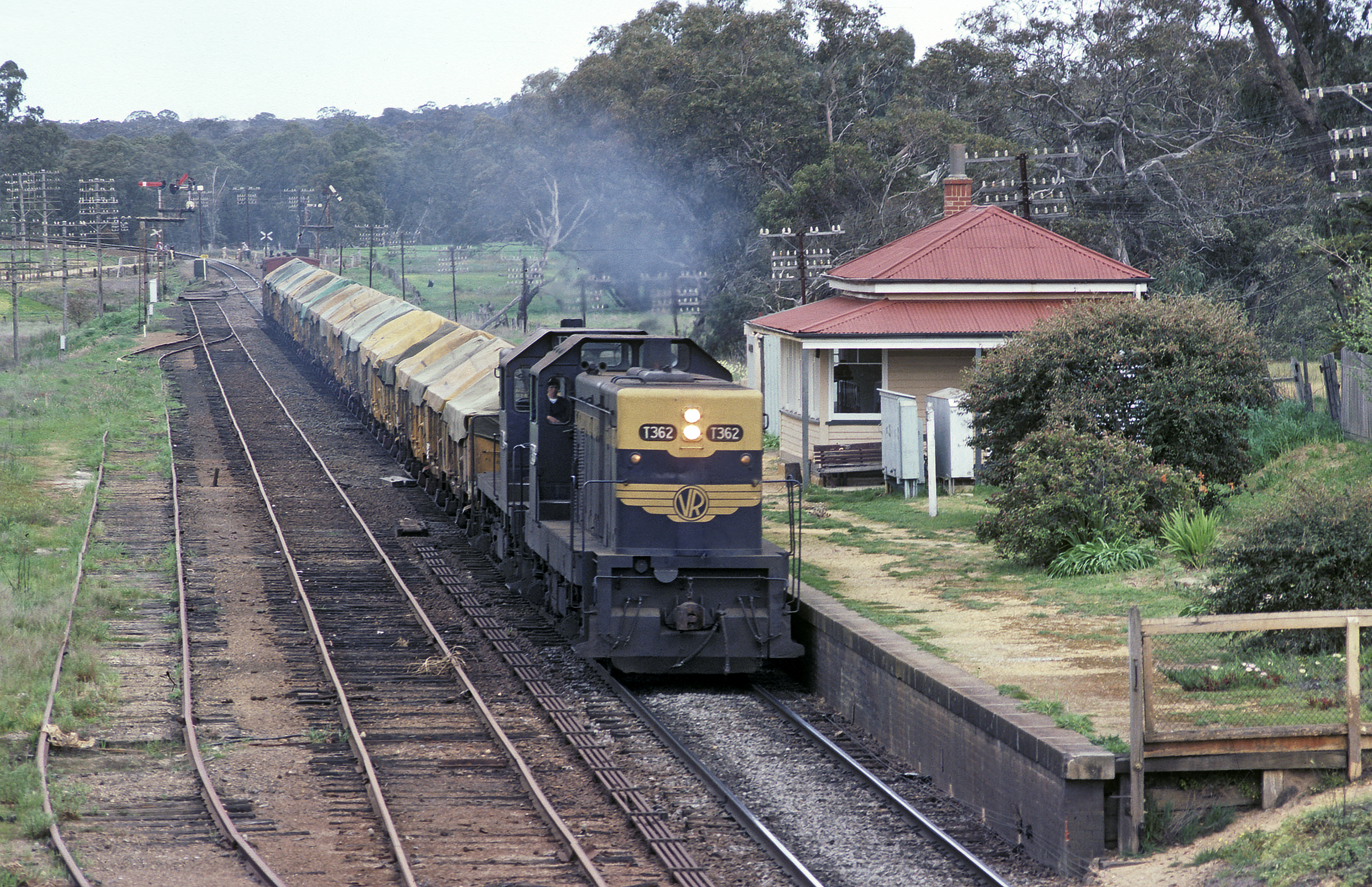
ABOVE: T 362 - T 380 head a down Ararat to Murtoa goods through Armstrong, the first station west of Ararat.The fact that the signals in both directions are at proceed indicates that the station is "switched out" Sept. 30 1981
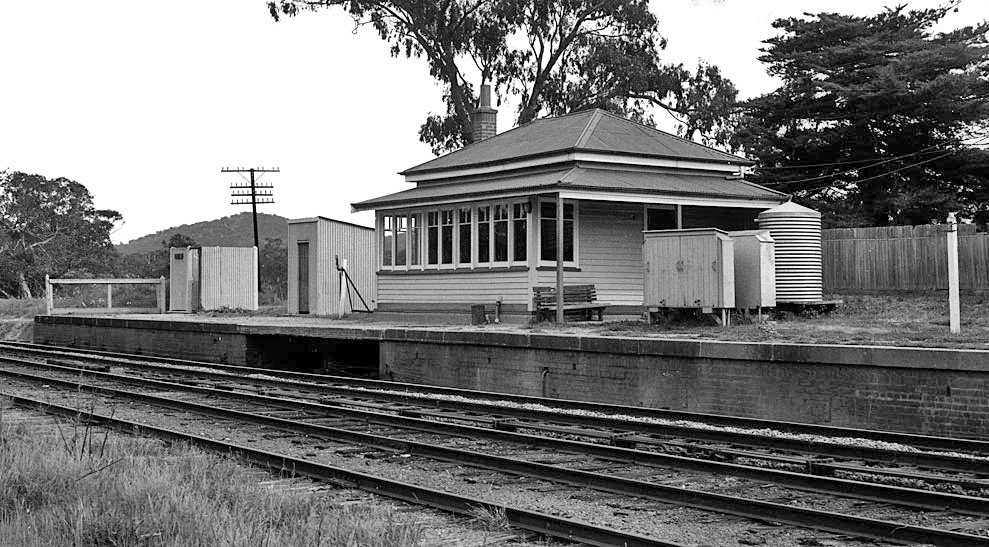
ABOVE: Armstrong station building photographed just before its demise, 1981 The building, and frame, date from 1945.
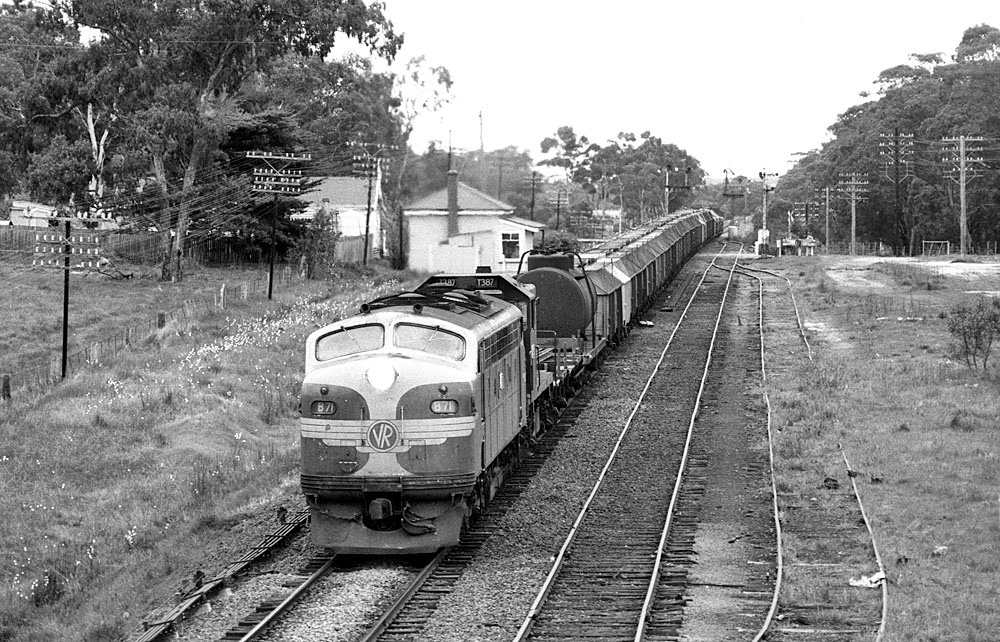
ABOVE: B 71 - T 387 haul an up wheat train consisting almost entirely of GH wagons through Armstrong. 1981
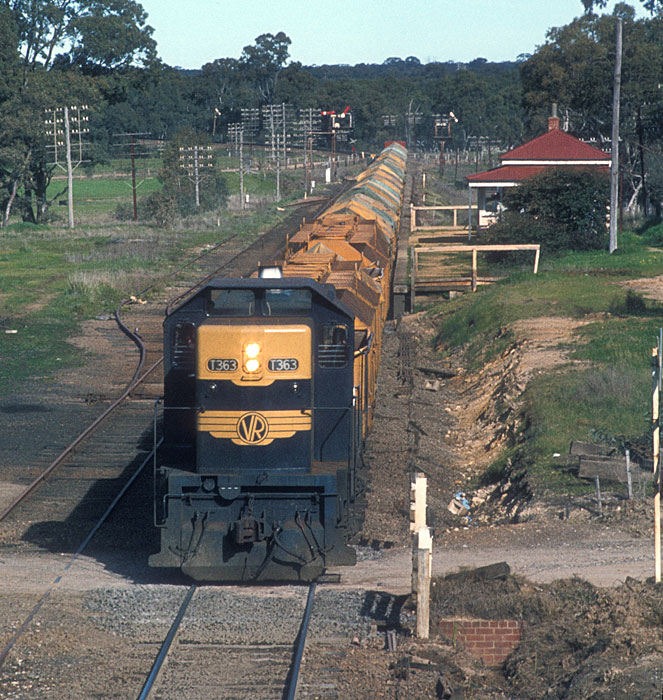
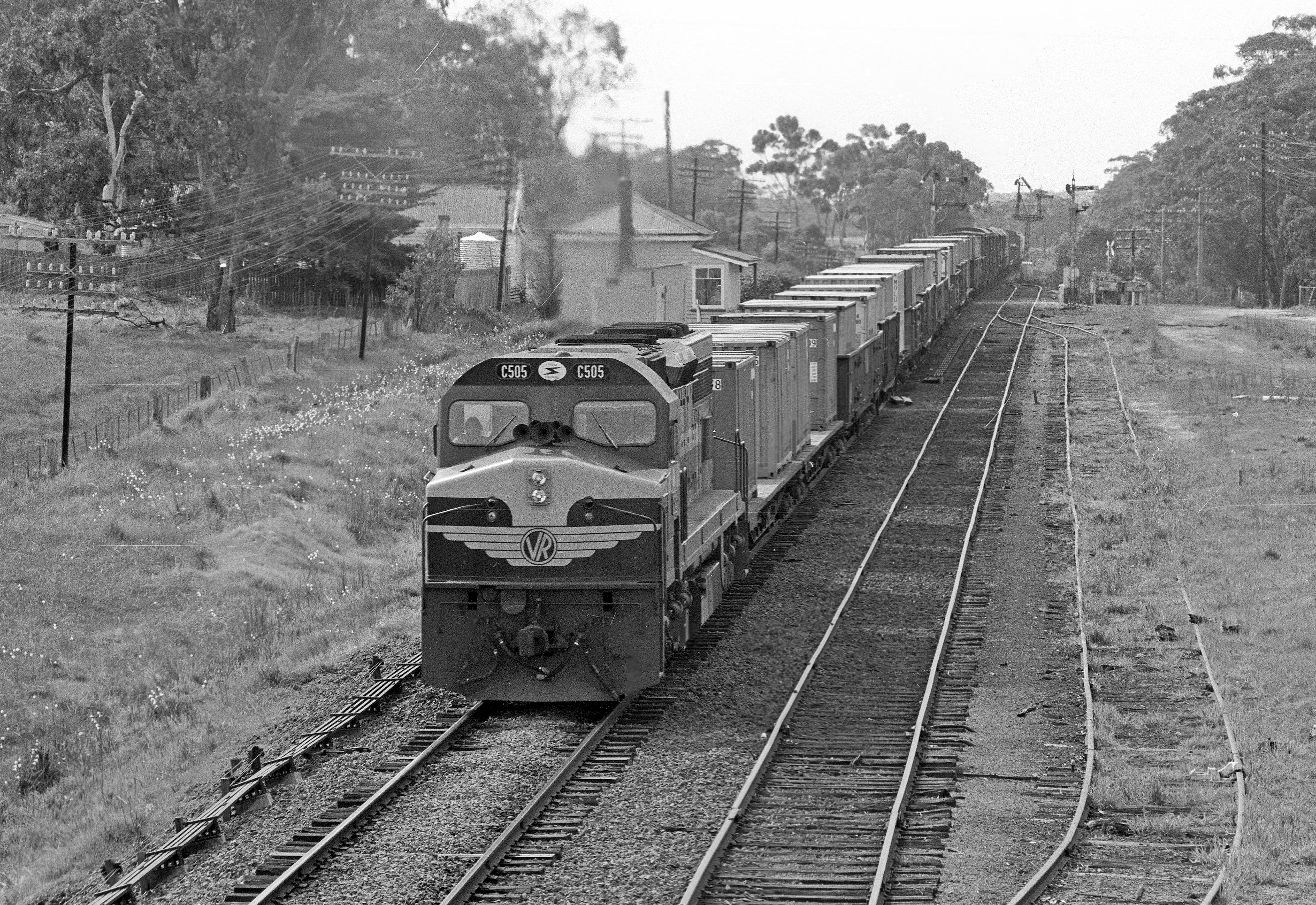
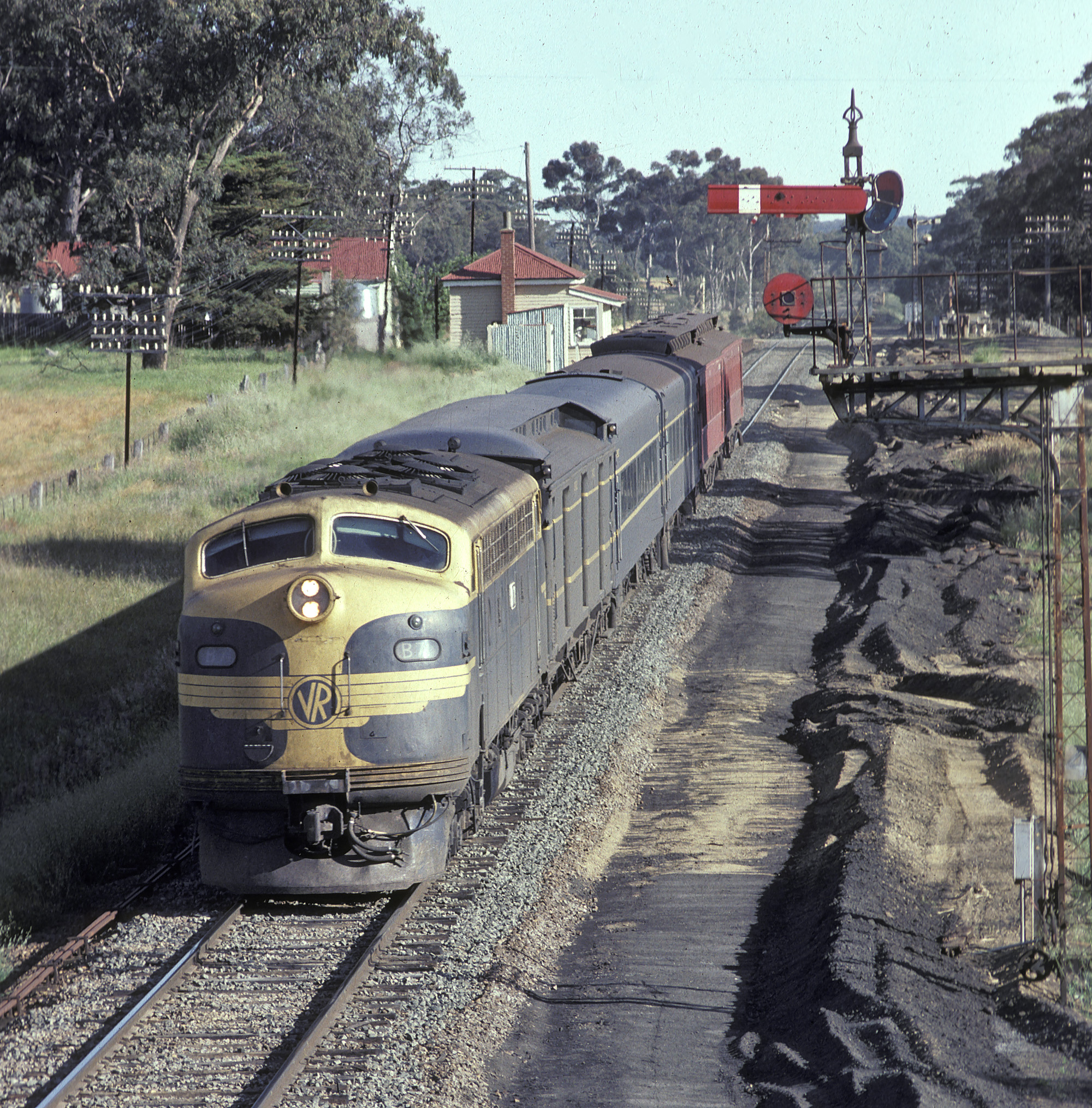
ABOVE: B 71 on the morning up Dimboola pass, 8130. The tracks have been ripped up and the station building and signals will be next. This was just after the rule that the guards van had to be at the rear of the train was abolished. Nov 3 1981.
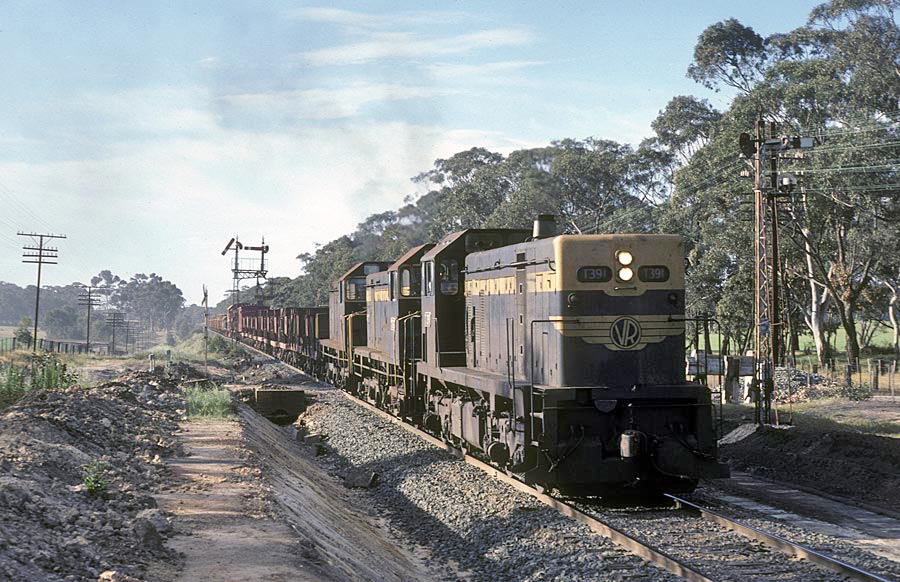
ABOVE: The end is near for the first crossing loop west of Ararat. Armstrong's platform has been cut back and the signalbox will never be switched in again. T 391 - Y 122 - Y 150 on an Up goods in the last hour of daylight on a hot summers afternoon. Nov 3 1981
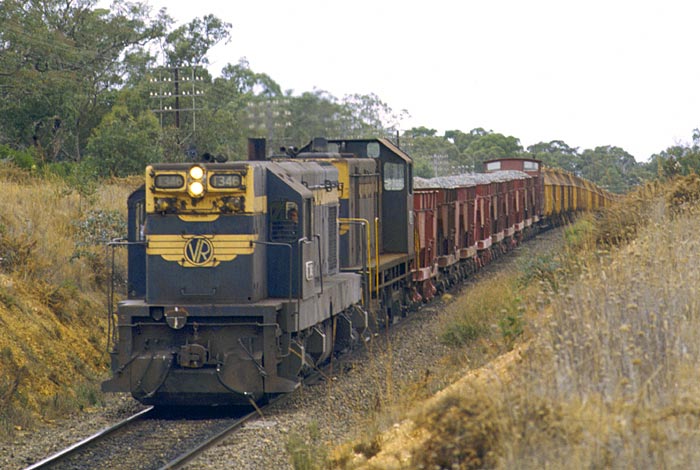
ABOVE: This Ararat to Murtoa empty wheat train had a loaded ballast train attached to it at the last minute hence the ZL in the middle of the train. The train is seen starting to drop down the grade towards Armstrong. 1981.
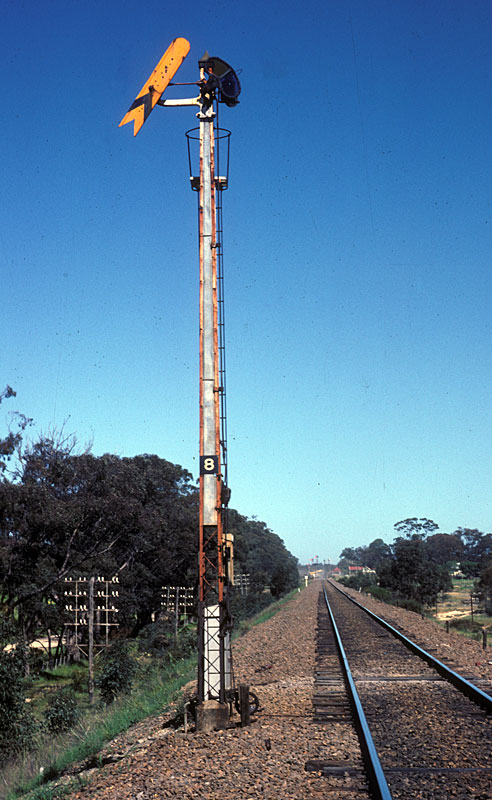
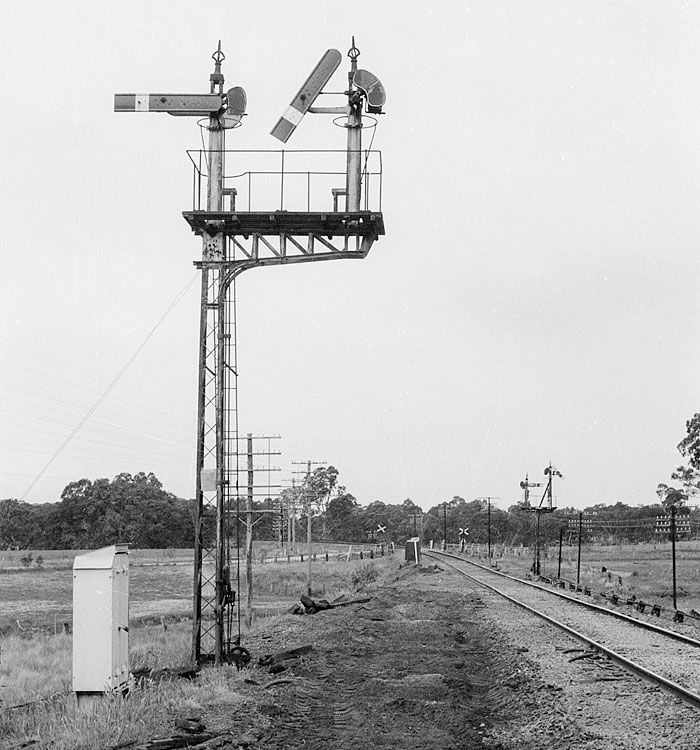
ABOVE: Armstrong's up departure home signals after the points had been removed. 1982.
Seppelt's siding
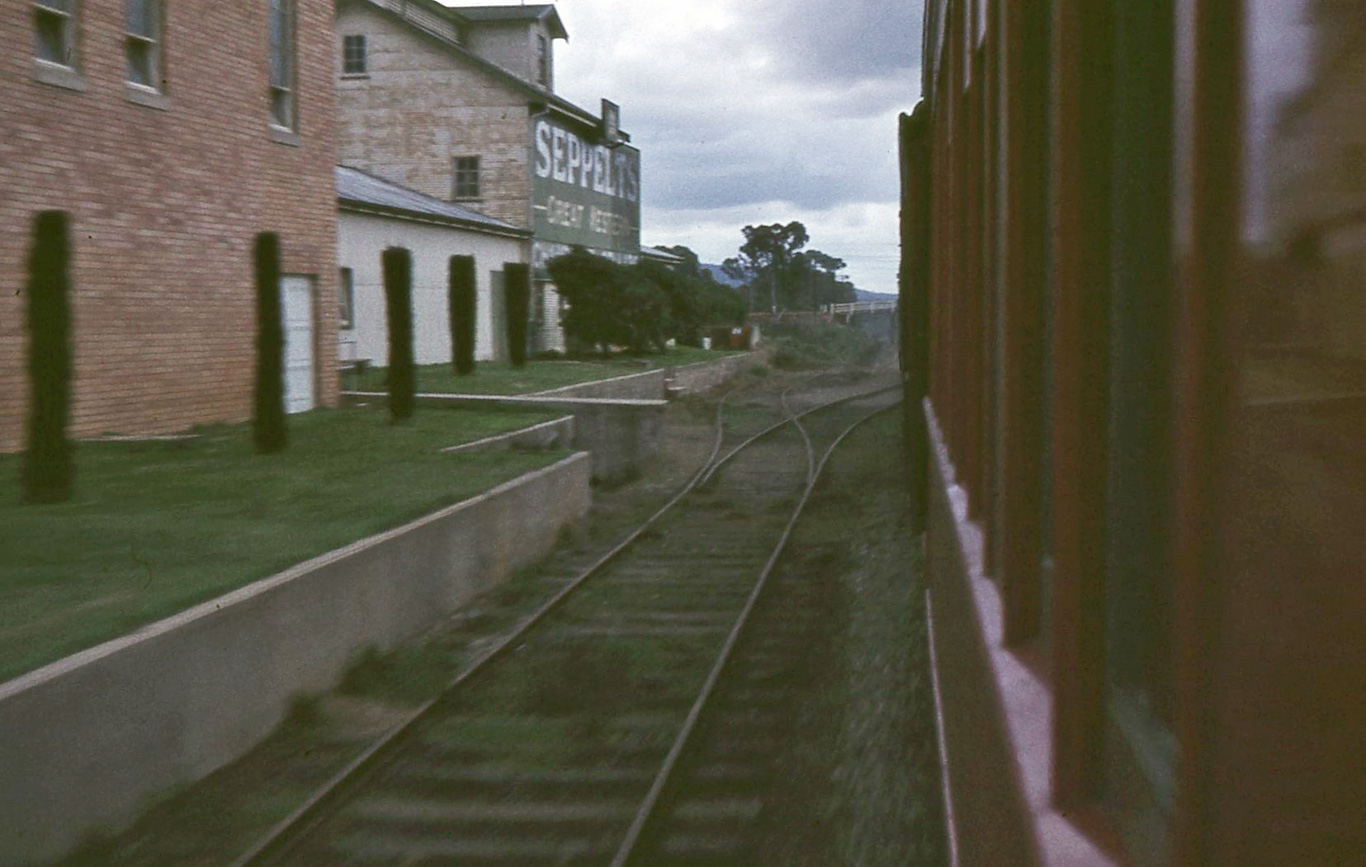
ABOVE: A view of Seppelt's siding from a passing passenger train. Seppelts siding was about a kilometre on the Ararat side of Great Western. It opened in 1897 as "Irvine's siding" and was re-named Seppelt's siding in 1924. photo date, July 1971. (photo courtesy Doug Miles)
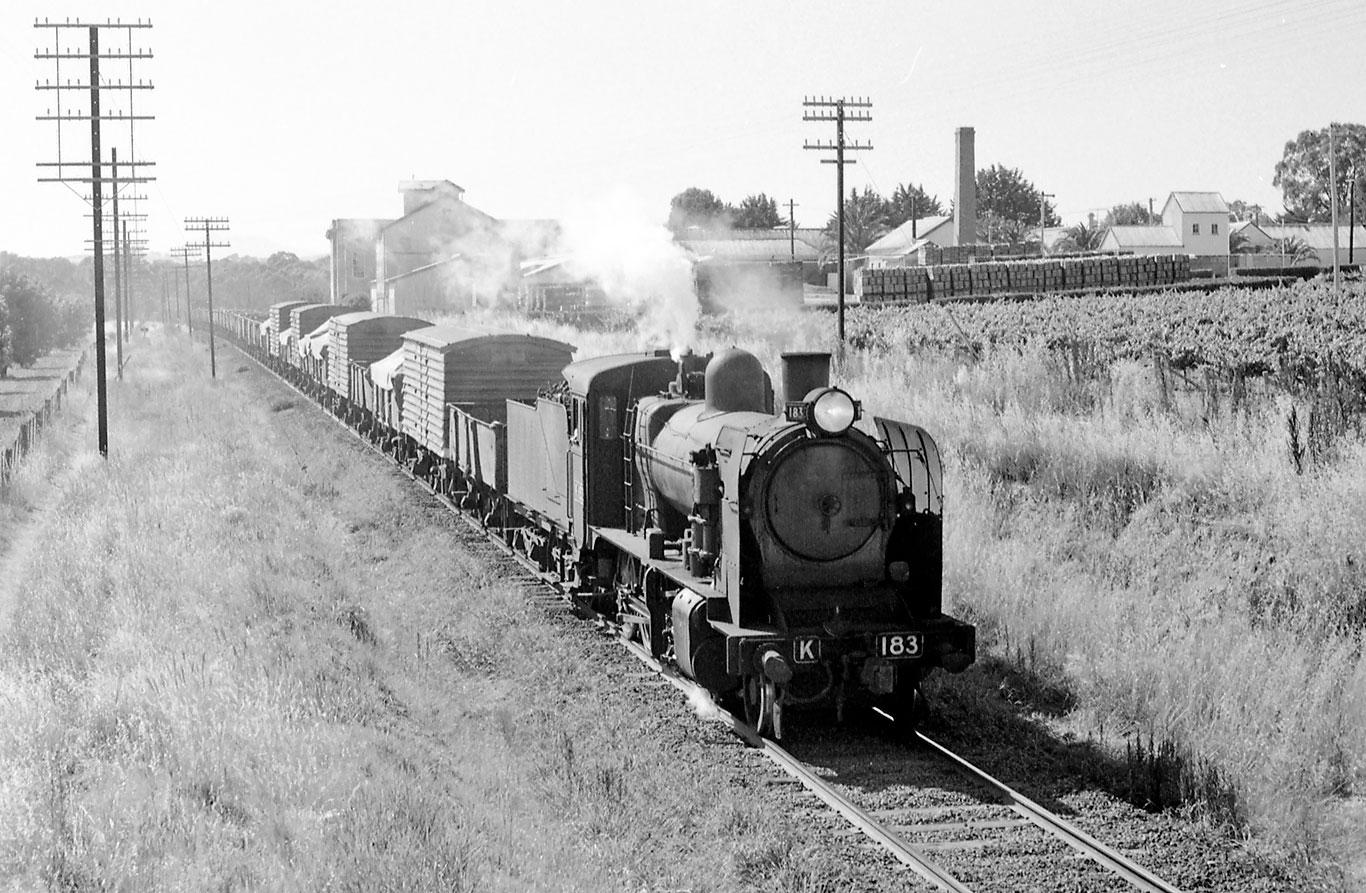
ABOVE: K 183 on a down goods passes the Seppelt Gt Western winery as it arrives at Great Western, Dec 21 1968. (photo courtesy Bob Wilson)
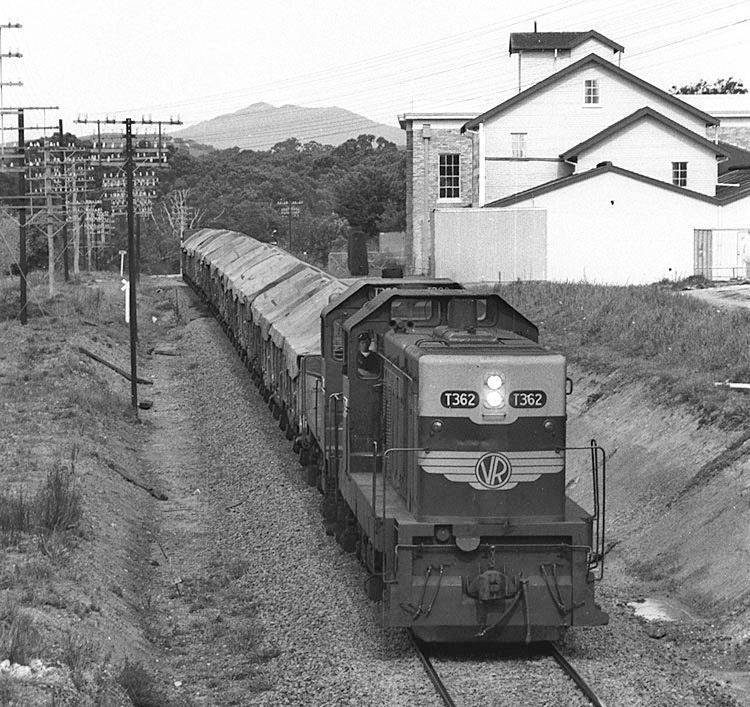
ABOVE: A pair of T's drop down into Great Western on an Ararat to Murtoa empty wheat train. The buildings shown are part of Seppelt's Great Western wine complex that was serviced by "Seppelt's siding" 1981 BELOW: S 310 heads a a down goods as it approaches Great Western. Jan. 1981.
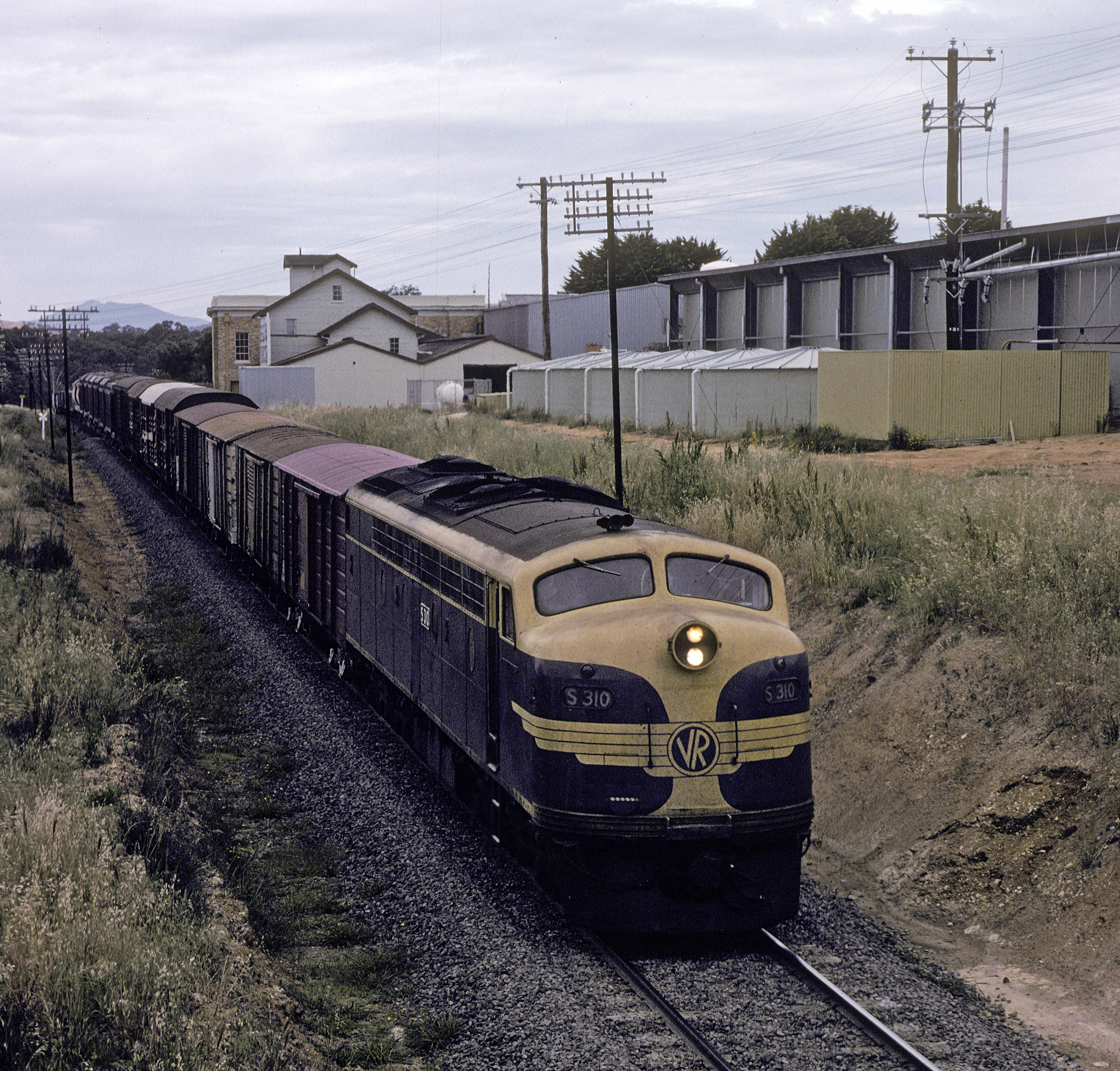
Great Western

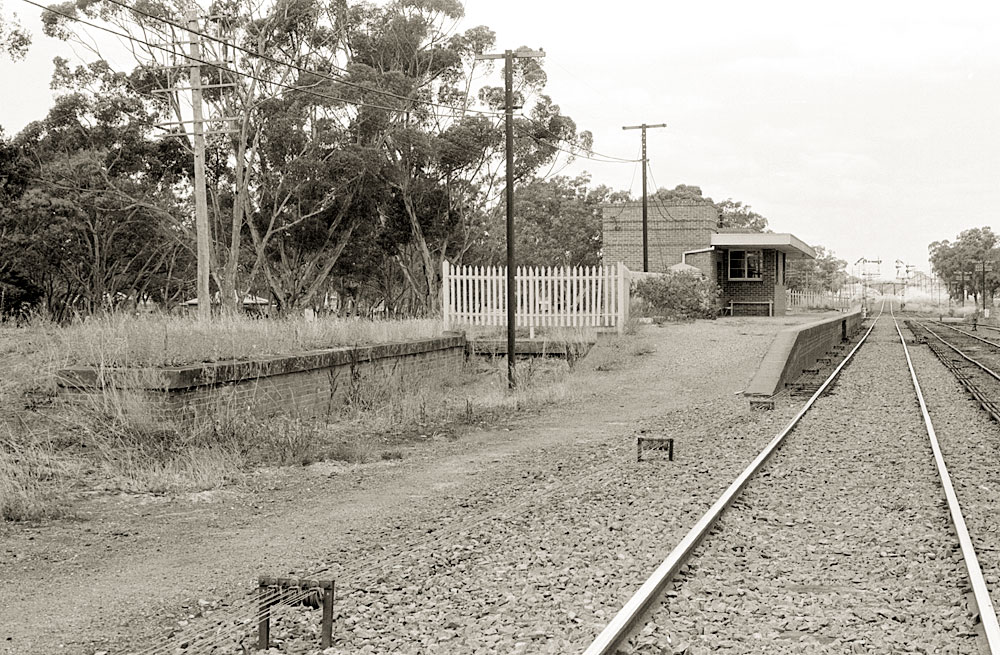
ABOVE & BELOW: Views looking towards Melbourne showing the remains of the carriage dock, 1981. This building dates from 1958 when the loop road was extended which required a new frame. (below photo circa 1960, courtesy SLV collection)
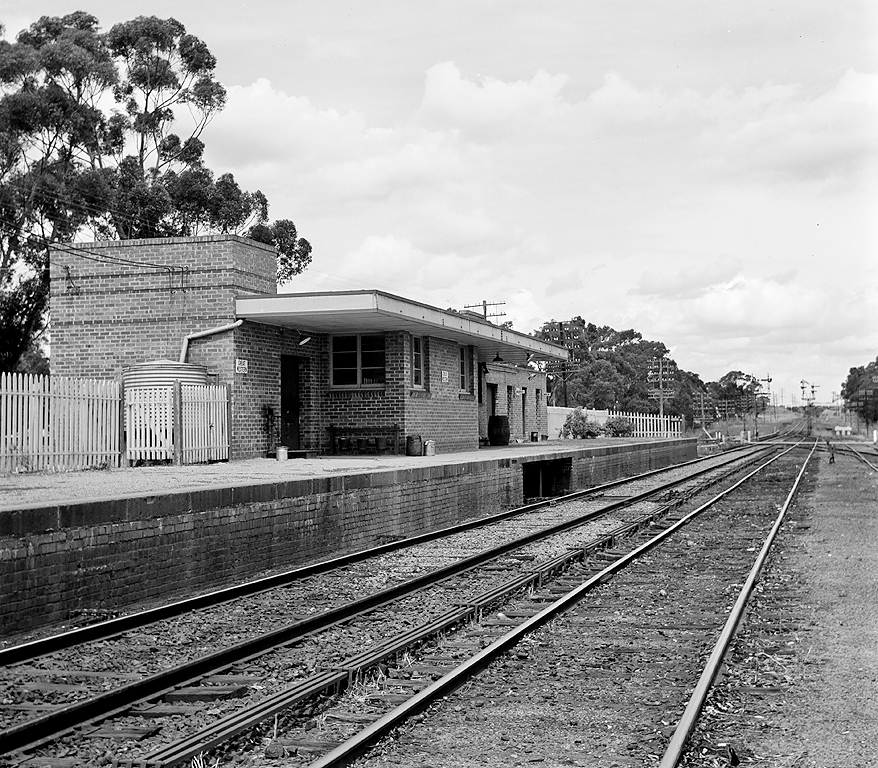
BELOW: Goods shed and station, looking east, circa 1960. (SLV collection)
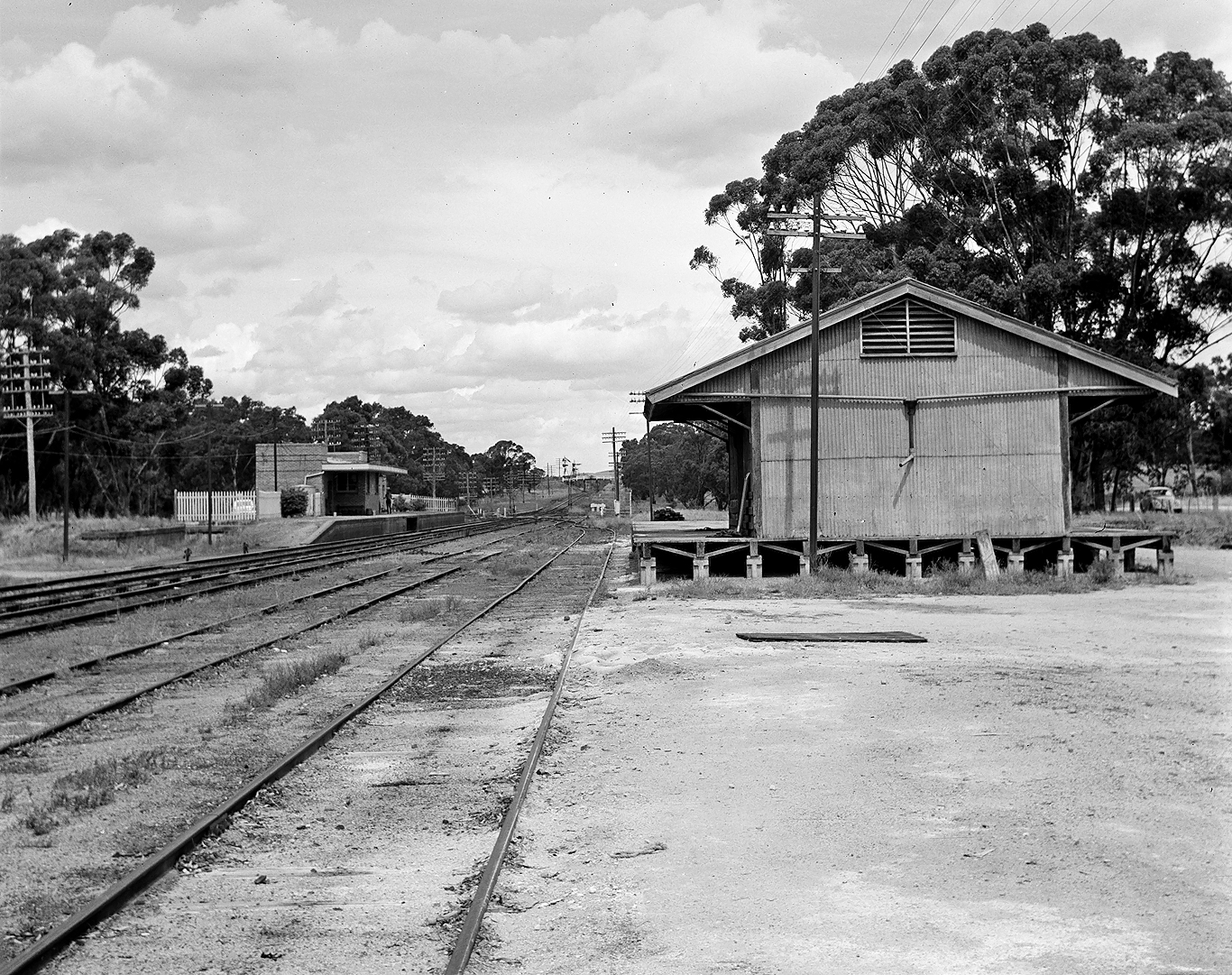
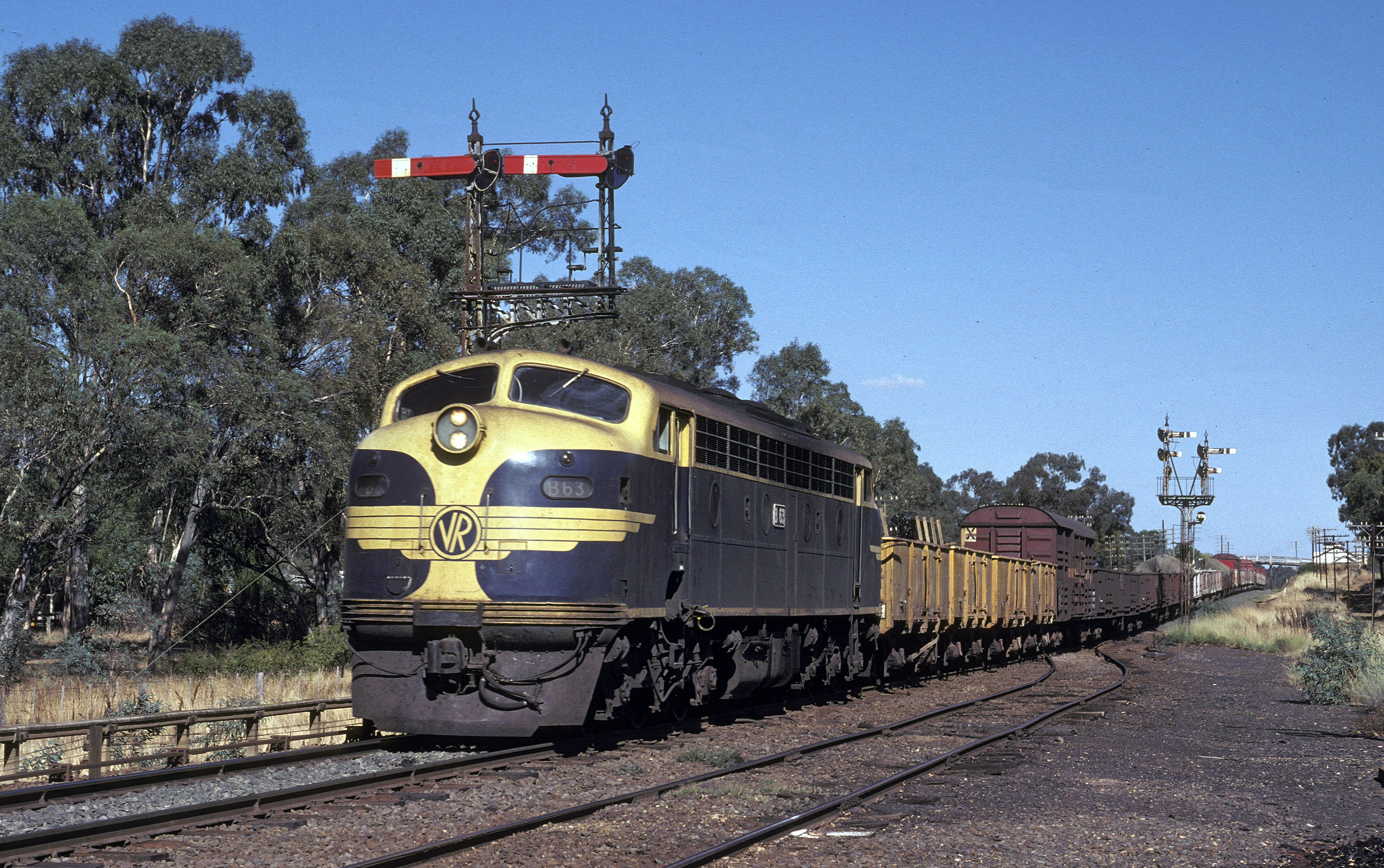
ABOVE: A down goods passes the up home departure signals and has the auto staff exchanger lowered. Feb 16 1982.
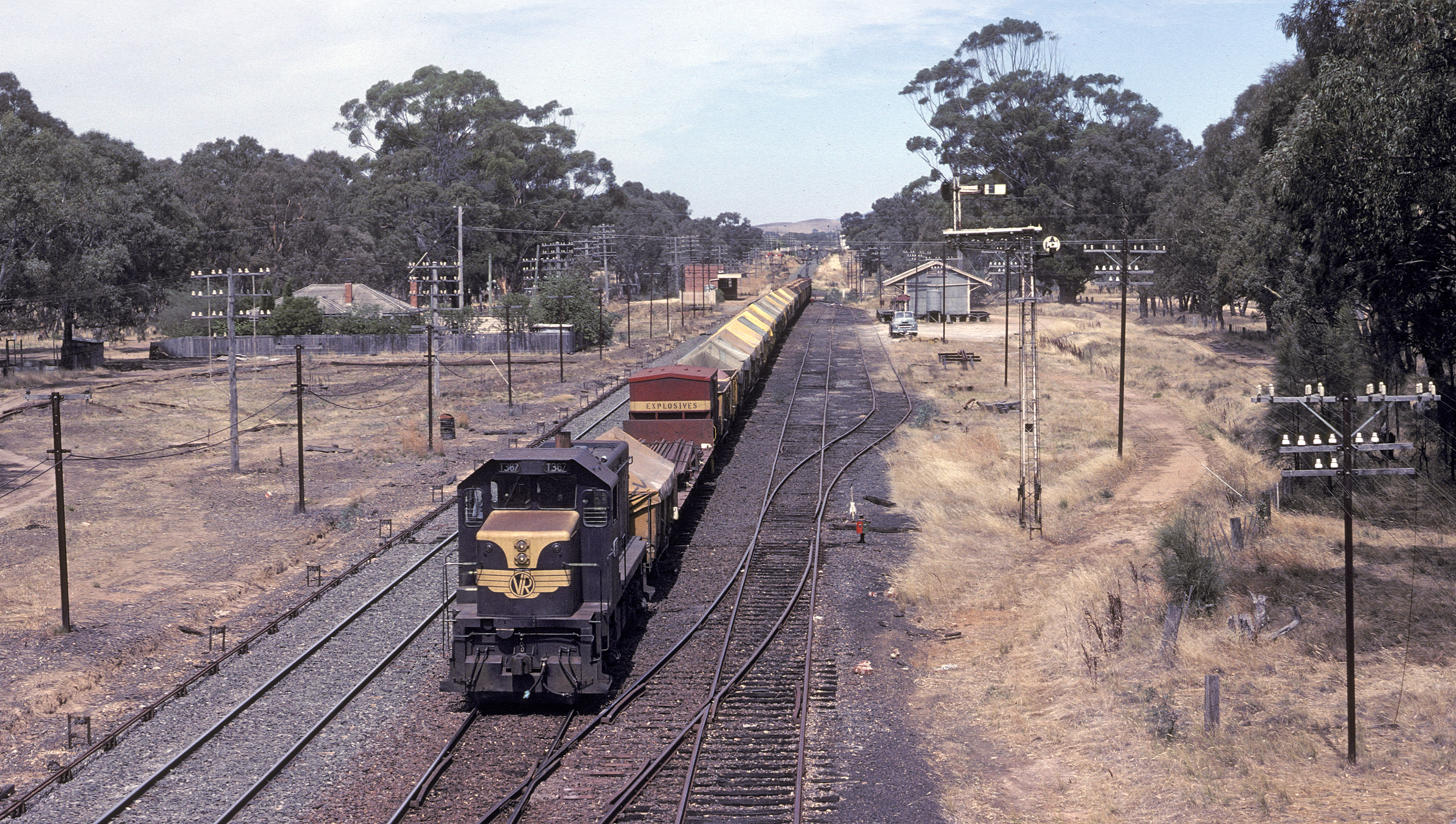
ABOVE: Whilst running this train, T 367 - 750t on Ararat to Murtoa goods, we were put away at Great Western for a cross so I took a shot from the signal mast. With CTC, Great Western was wiped off the railway map although a new crossing loop several miles from here still bears its name. Feb 3 1982
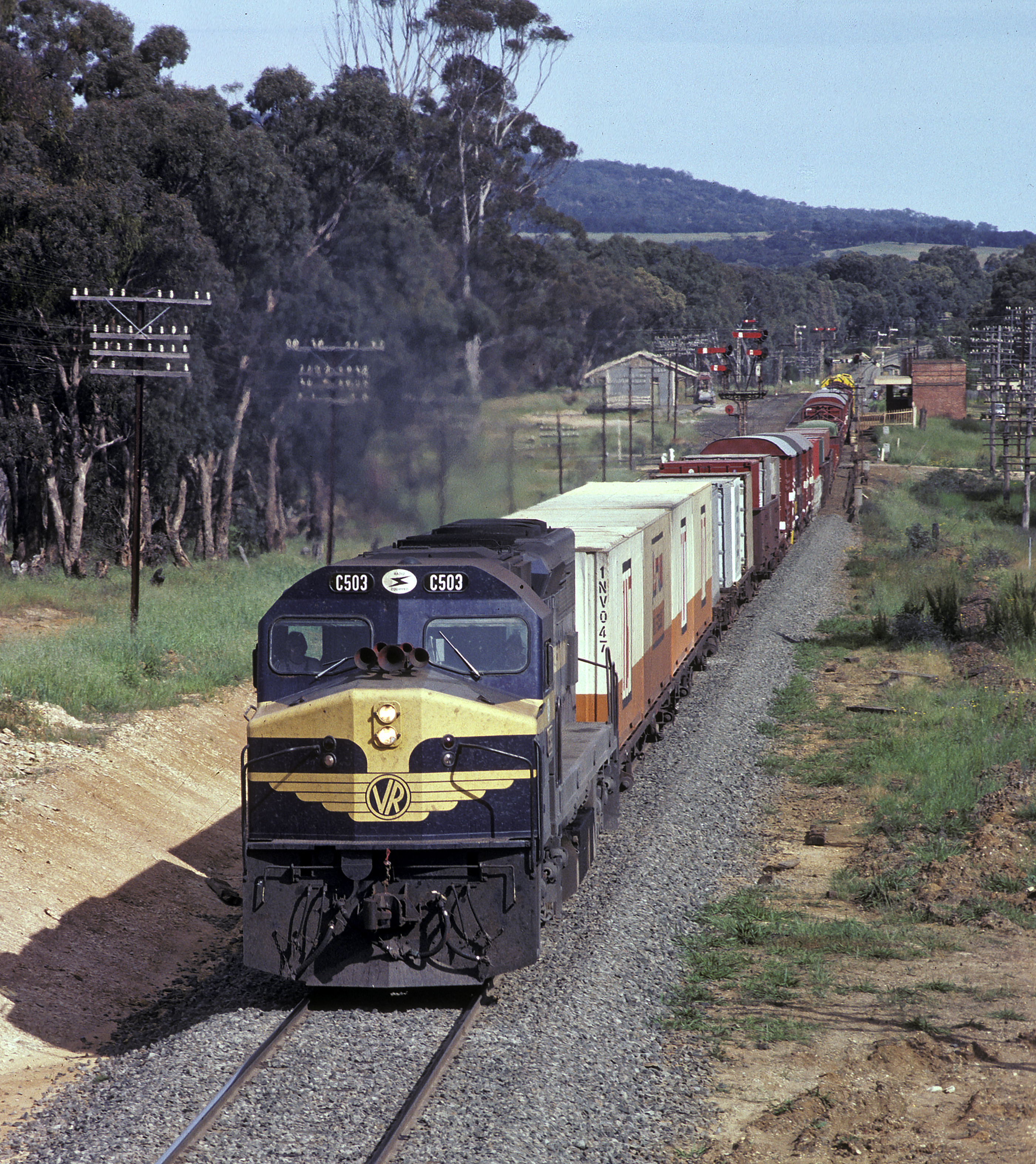
ABOVE: Looking west from the road overbridge at the east end of the station, C 503 powers away from Great Western on 9146, a Serviceton to Melbourne "jet" Nov 3 1981.
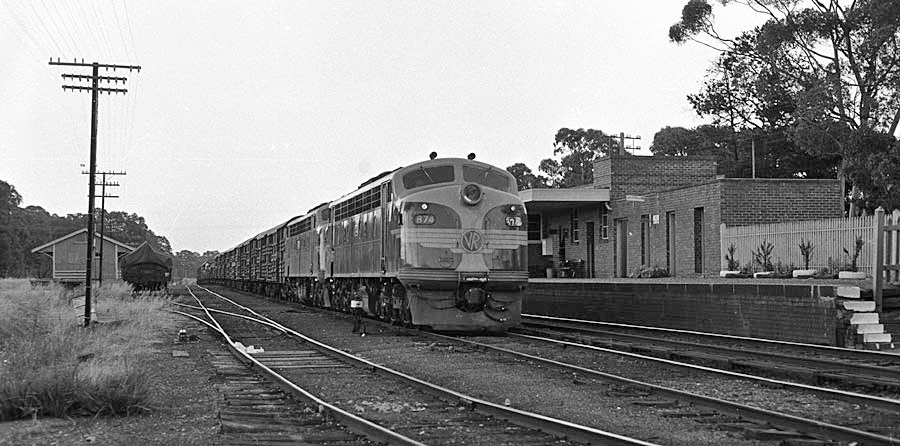
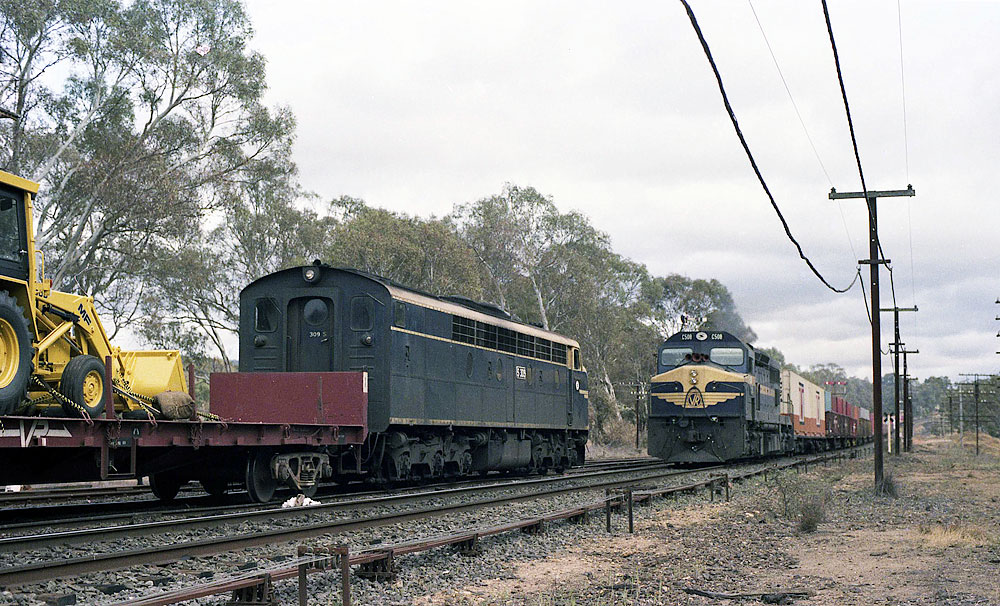
ABOVE: Great Western was the first decent sized crossing loop west of Ararat so saw its fair share of trains crossing. Here we see a down goods hauled by S 309 sitting in #2 road while C 508 rushes past on an up goods.
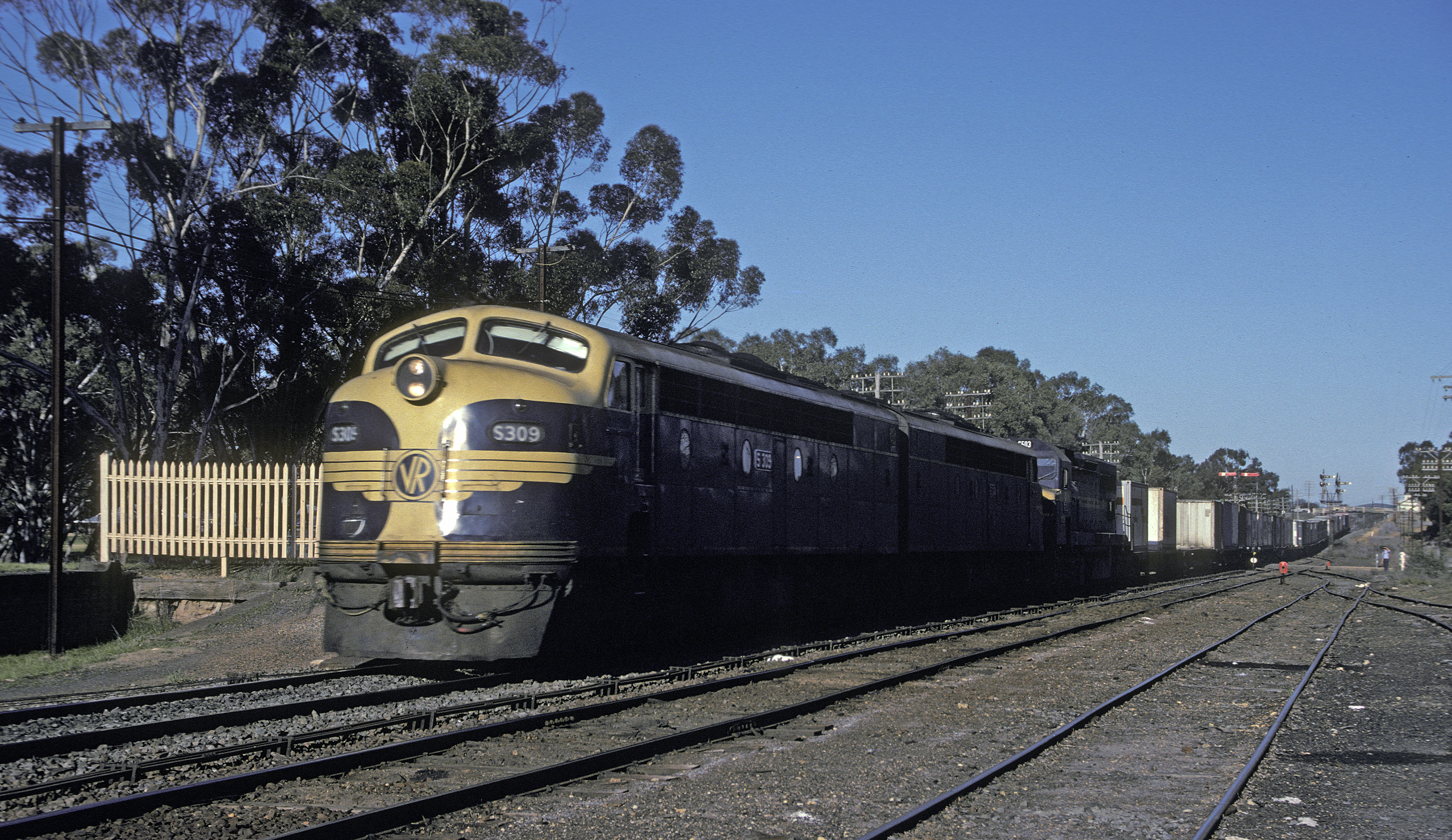
ABOVE: 2 S class and a C power through Great Western on a down jet in the late afternoon sun, Sep 1982.
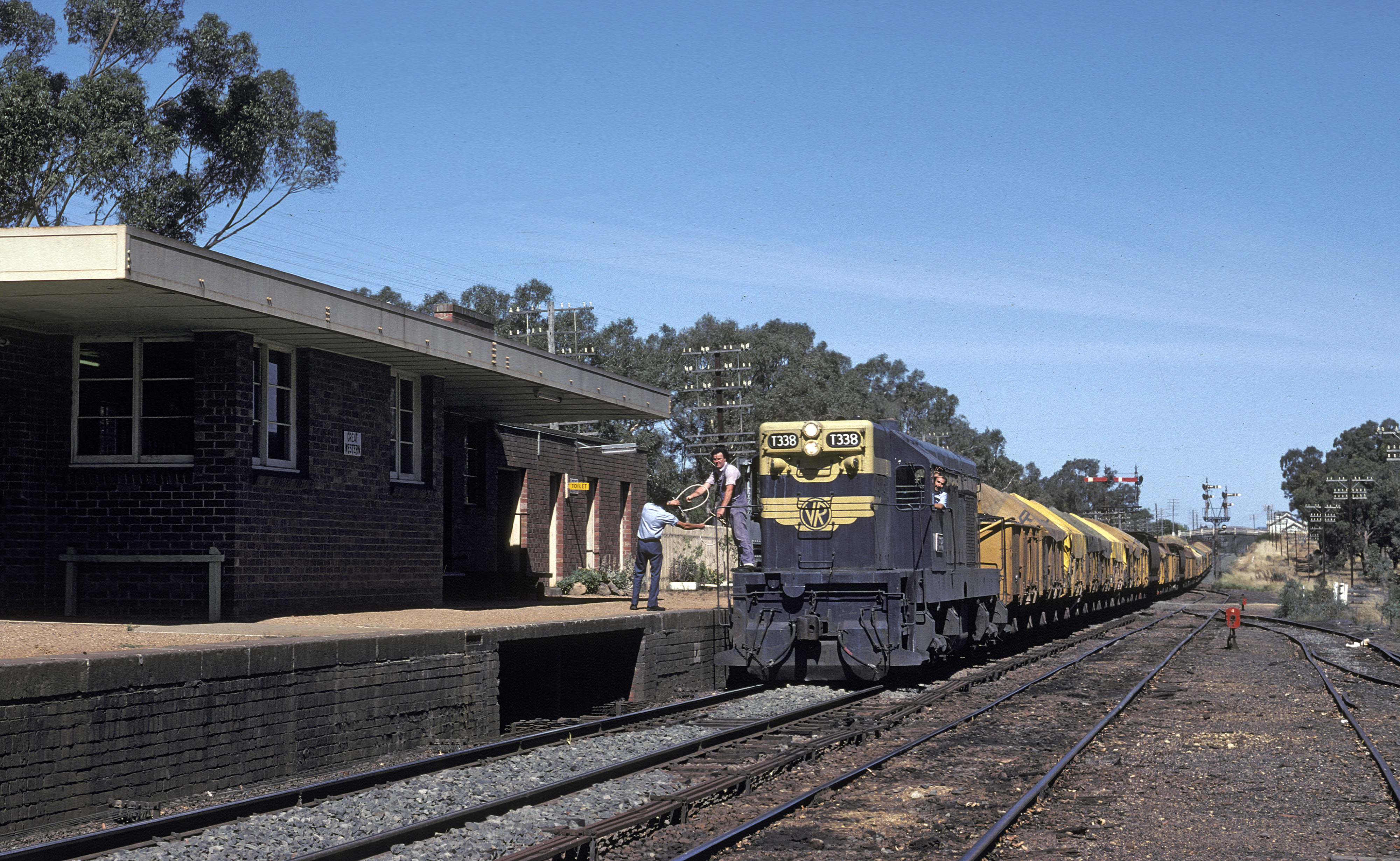
ABOVE: A down Ararat to Murtoa empty wheat train slows to hand exchange the staff at Great Western, Feb 4 1982.
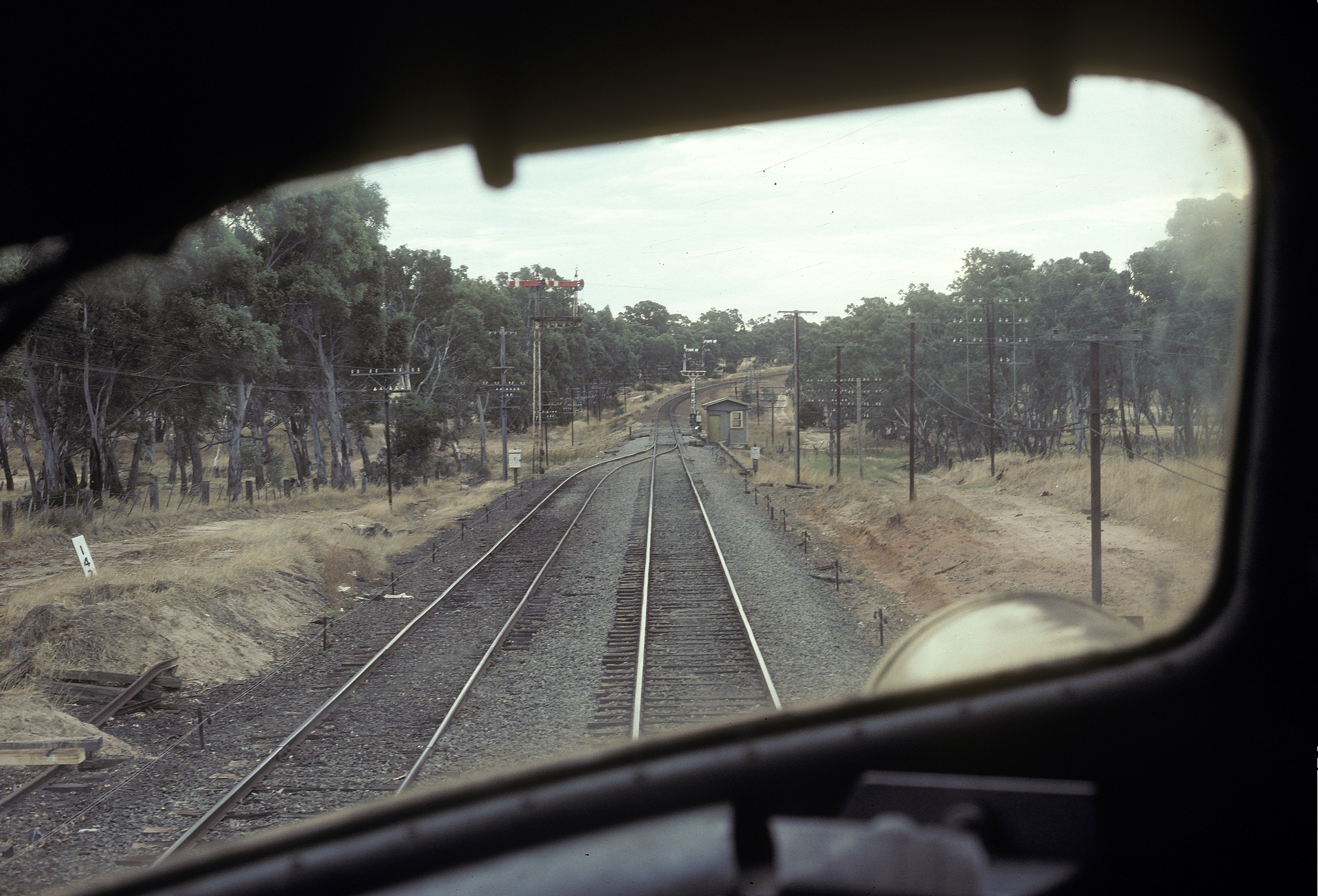
ABOVE: The view from a B class looking west at the down departure home signals. From memory we were waiting for a goods ahead of us to get to Stawell. 1981.
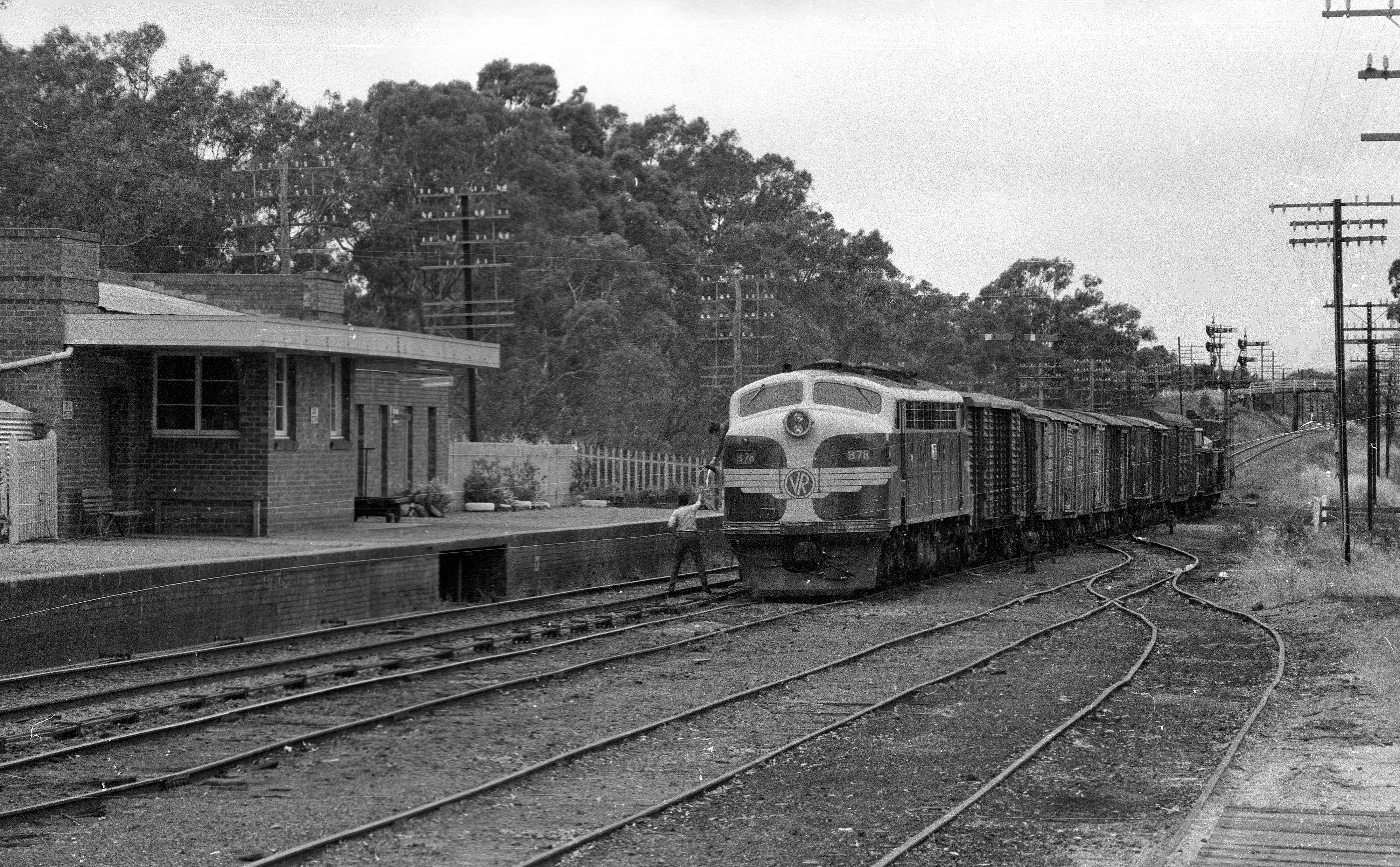
ABOVE: A short down goods arrives into #2 road and hands up the staff, mid 1981.
Stawell
1947 Signal Diagram
1977 Signal Diagram
1977 Stawell A box diagram
1977 Stawell B box diagram
1936 plan of loco depot
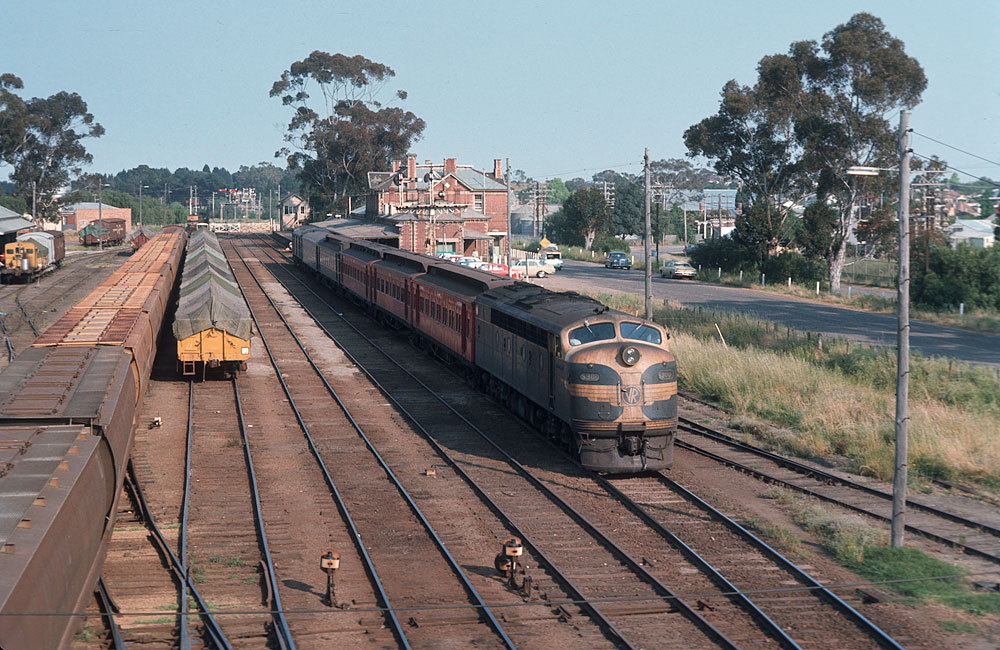
ABOVE: S 300 heads the 6.55am Dimboola to Spencer St pass. as it departs Stawell. 1975. (photo courtesy Trevor Penn)
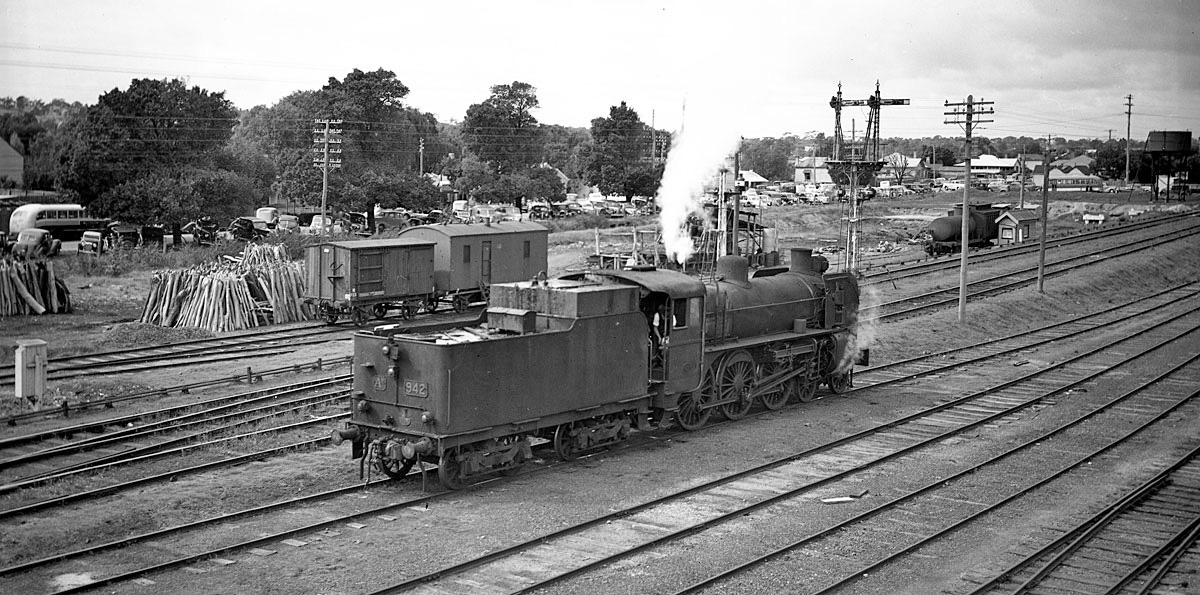
ABOVE: By the many parked cars it looks like Stawell Gift time. Phil Dunn has sent me some observations about A2 942 which also helps date the photo. A2 942 was converted to oil firing and issued to traffic 13-12-45 the first to be done. It was converted to heavy residual oil 21-3-51 and water treatment was fitted about the same time. I am pretty sure that A2 942 entered service as an oil burner with a radiused edge on the The photo shows the locomotive pre heavy residual oil and pre water treatment though with blow down muffler and square edged tank. A2 942 was shopped at Ballarat North in 1948 and in 1949 so a tender change or oil tank change might have been undertaken at either shopping. My guess is the photo was taken 1949-50."
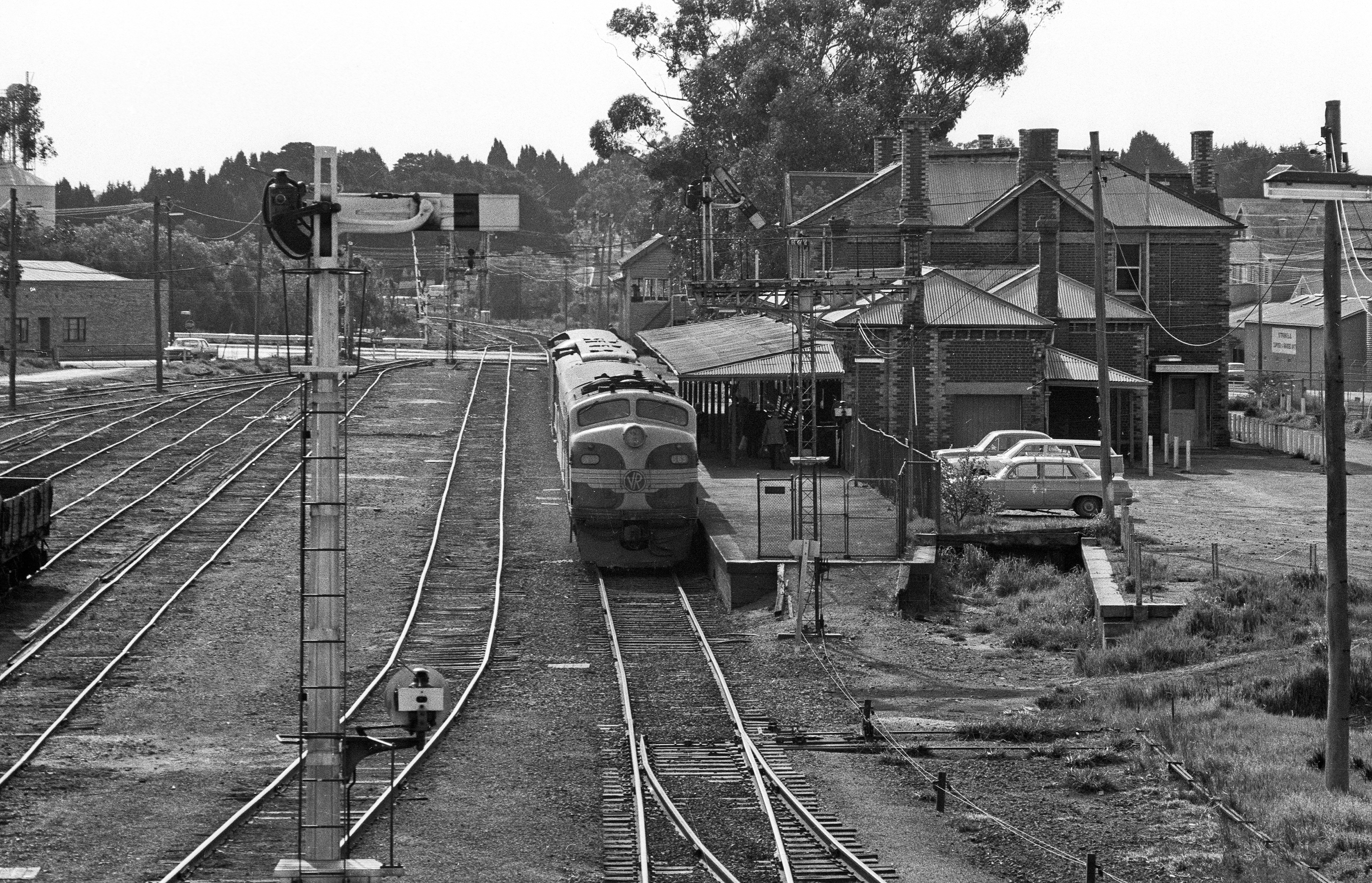
ABOVE: B 63 on the afternoon up Horsham to Spencer St. pass. pauses at Stawell. 1981. The remains of the carriage dock can be seen on the right.

ABOVE: B 80 in its new "teacup" paint leads a brand new "N set" into Stawell on the 8.30am Spencer St. to Horsham pass. Jan. 1982
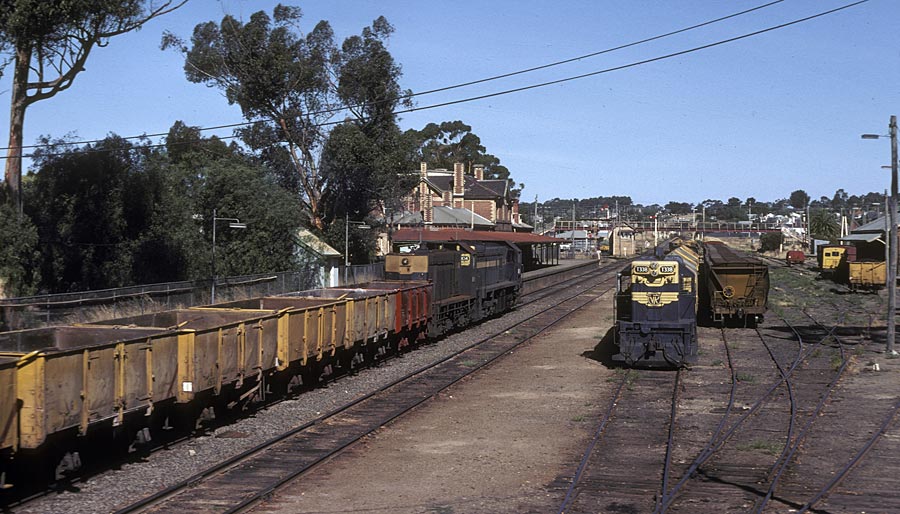
ABOVE: An X and Y class on an up empty superphosphate train cross a down goods at Stawell. The view is looking towards Melbourne. Stawell A signalbox can be seen above the flat top T .Feb. 4 1982.
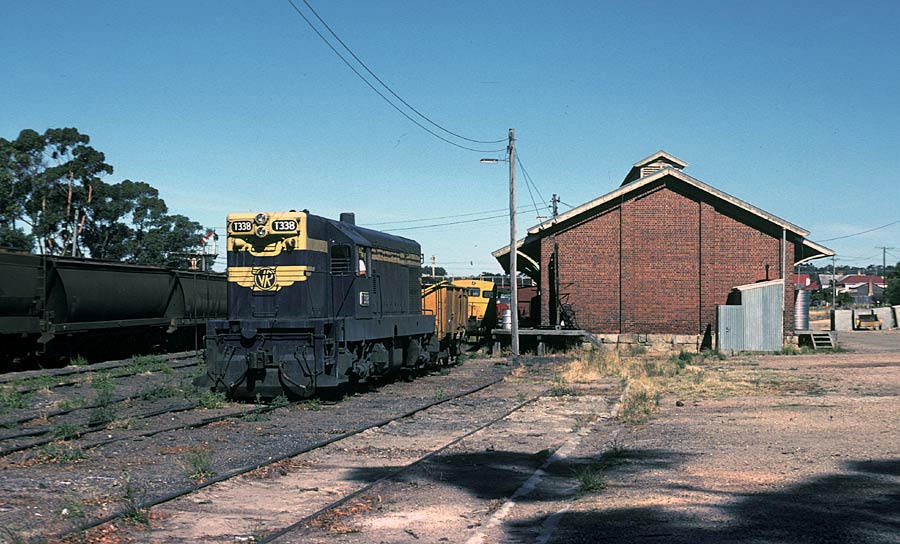
ABOVE: T 338 shunts at Stawell while running a Ararat to Murtoa roadside goods in. Unlike most VR goods sheds Stawells was a rather substantial brick building.

ABOVE: The "Sunday Excursion" Spencer St. to Horsham service passes "Stawell A box" 1981.
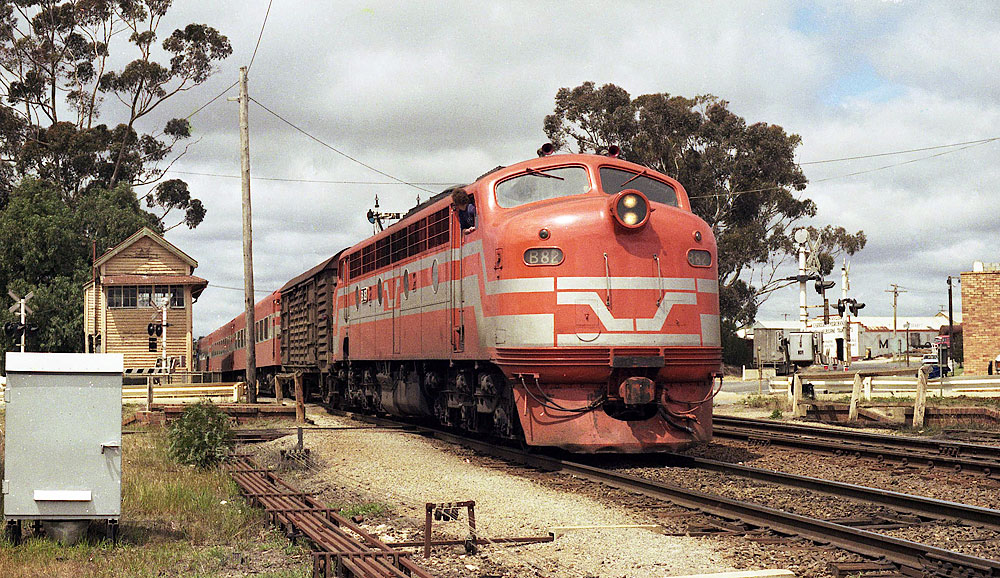
ABOVE: The down Horsham pass passes Stawell B box as it departs Stawell. Oct 18 1982. (photo courtesy John Ward)
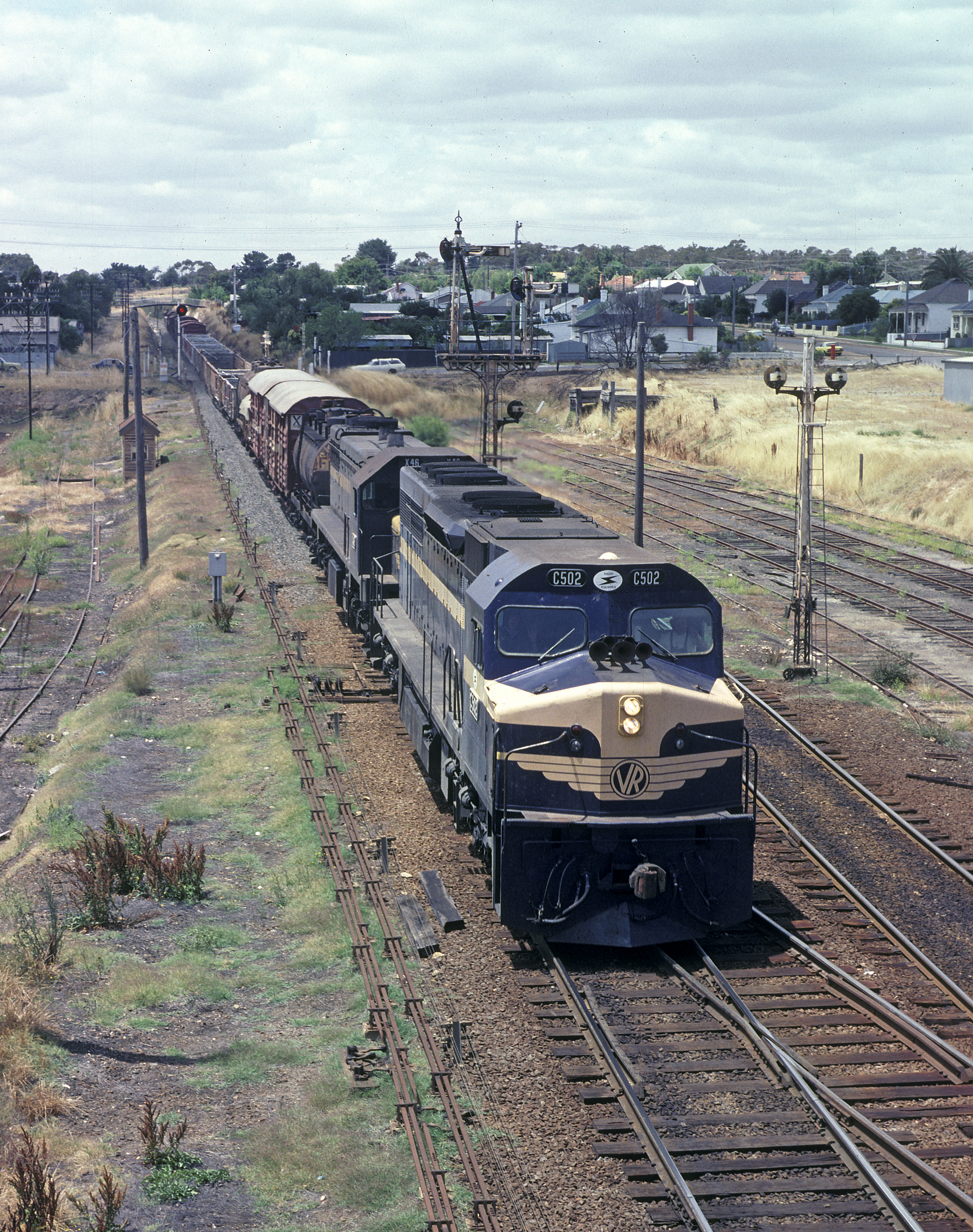
ABOVE: A Melbourne to Dimboola fast goods drops down into Stawell, Feb. 1982.
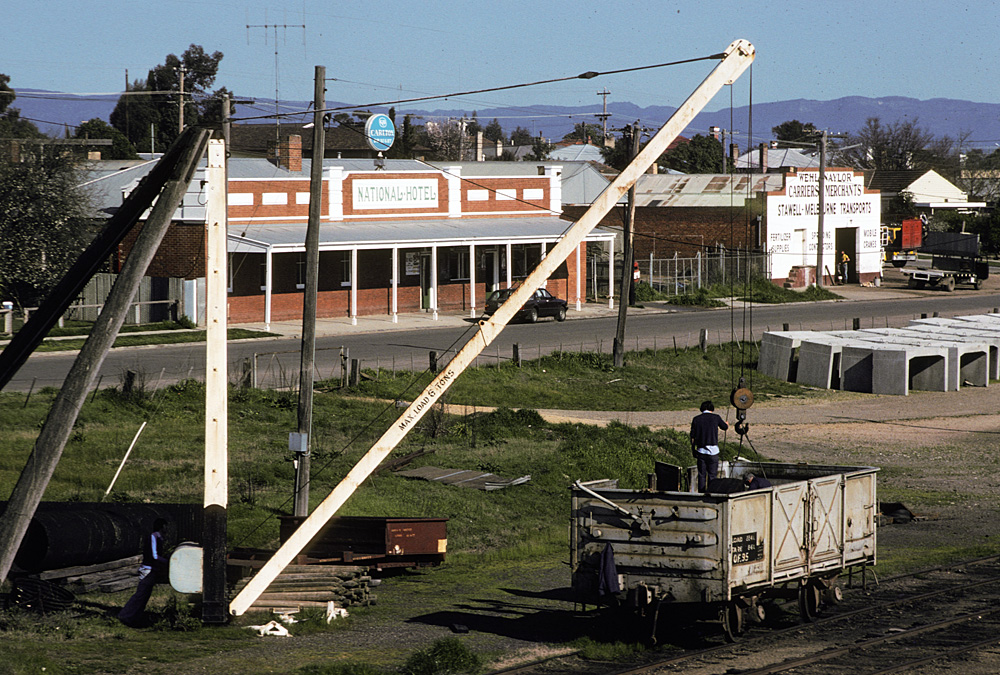
ABOVE: An SAR open wagon is unloaded in the goods yard. 1981.
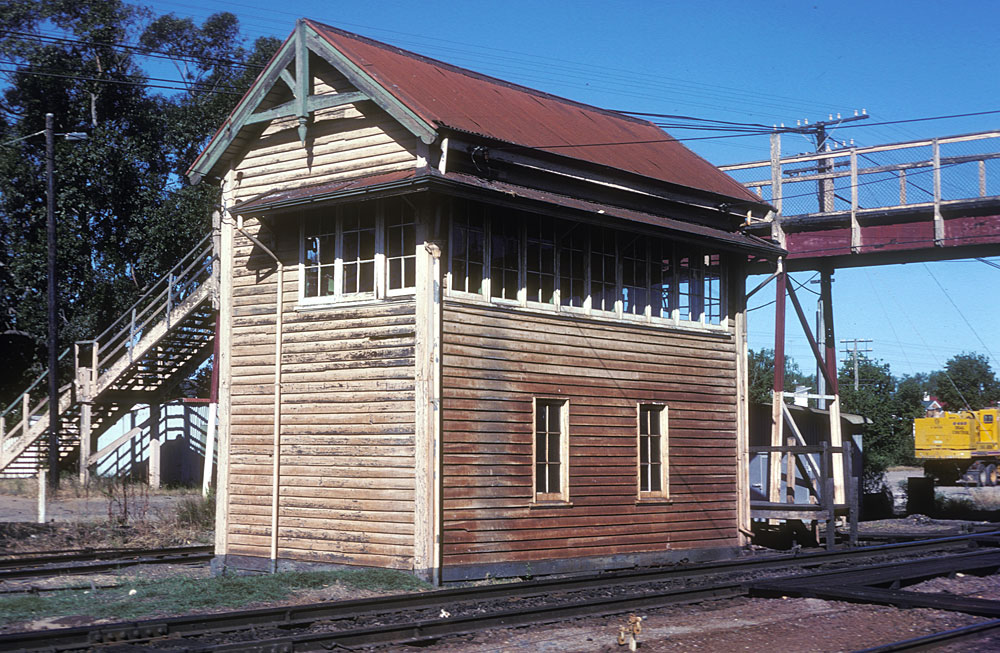
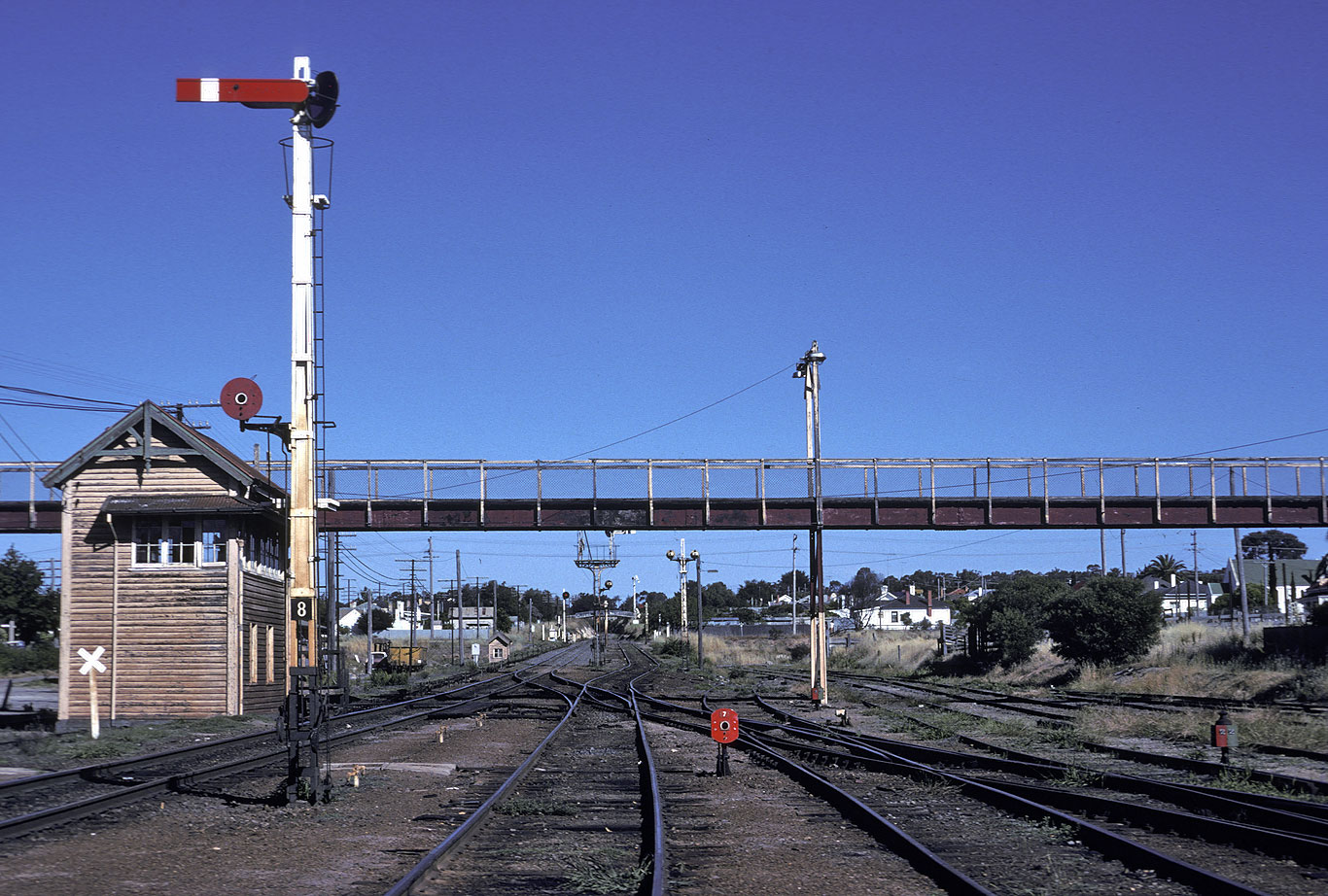
This is the content for Layout P Tag
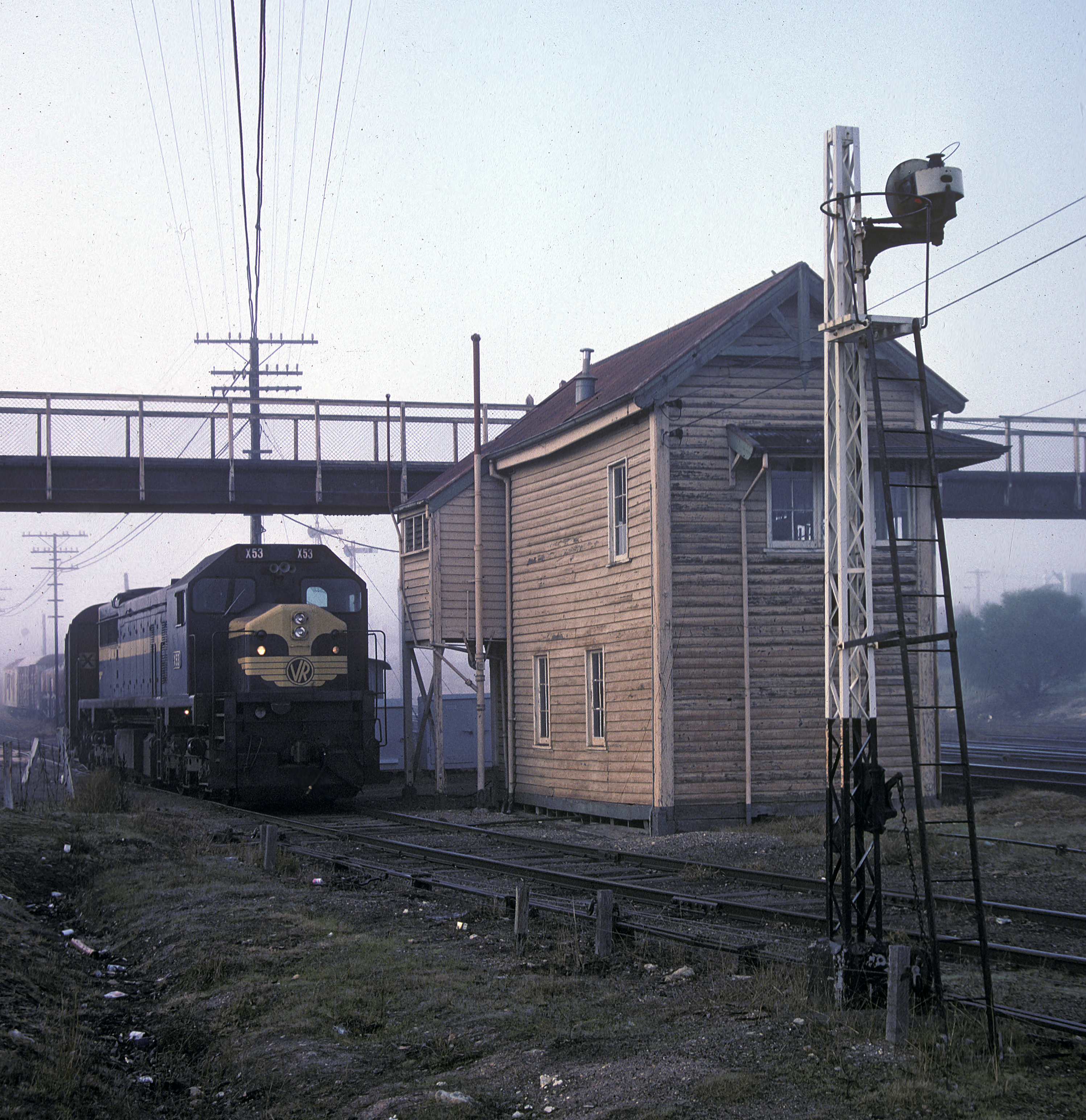
ABOVE: I was firing for my good mate, and fellow railfan, Chris Wurr on this train and you can bet that any train worked by us was well photographed! The train was #9103 (200t) and we had departed Ararat at 8.00am. At Stawell we were put away for a cross in the fog and for a reason that escapes me now, we were put into the short track behind Stawell A box. June 8 1982. A few years later, after I had transfered to Wodonga I went up to Ararat to spend a few days with Chris and travelled by car along the mainline to see the newly installed CTC. When we arrived at Stawell I was shocked to see the remains of this signalbox. All that was left was the smouldering stumps of the signalbox having just been burnt to the ground.
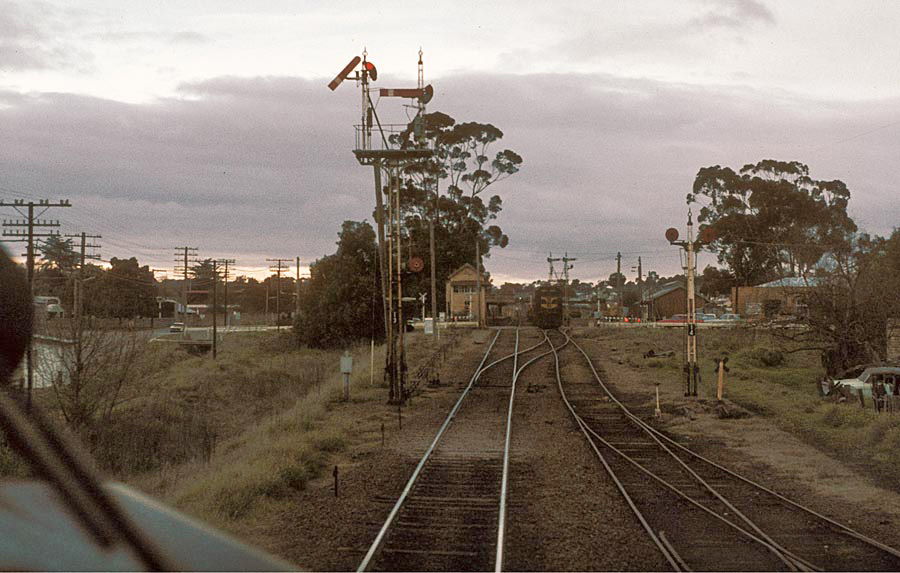
ABOVE: The view from C 509 on an up "jet" as we storm through Stawell. Aug. 13 1981.
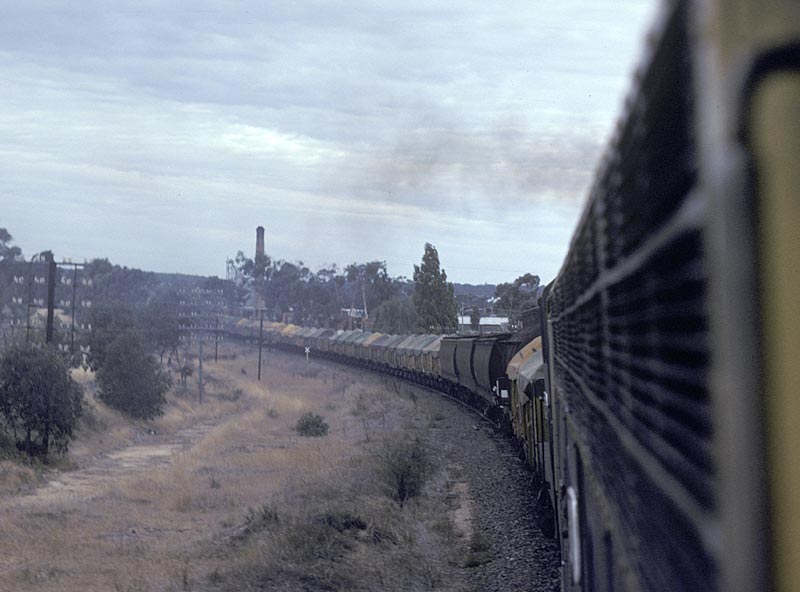
ABOVE: The view from the cab of B 63 we leave Stawell on an Ararat to Marmalake empty wheat train. Feb. 1981
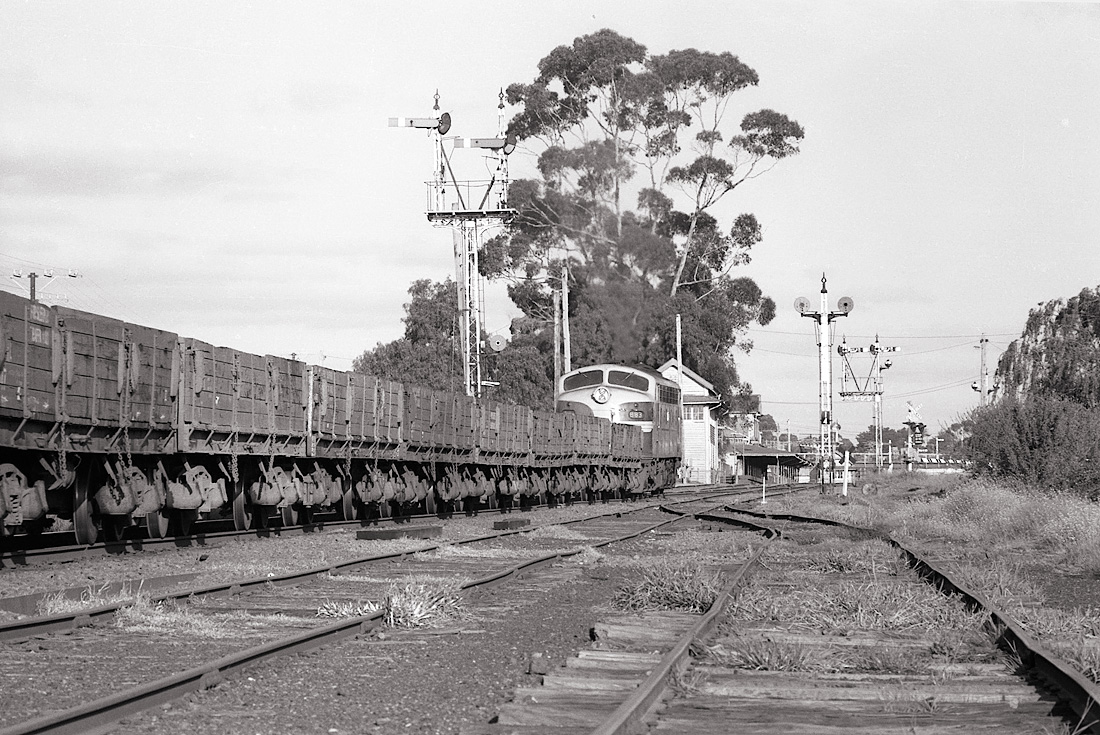
ABOVE: Of all the pictures I took at Stawell, this is my favourite. I'm standing on the remains of the Grampians line looking east as an up goods passes by in full throttle for the attack on Stawell bank. I always thought that the gum trees behind the signalbox were the tallest I've ever seen. 1982
This is the content for Layout P Tag
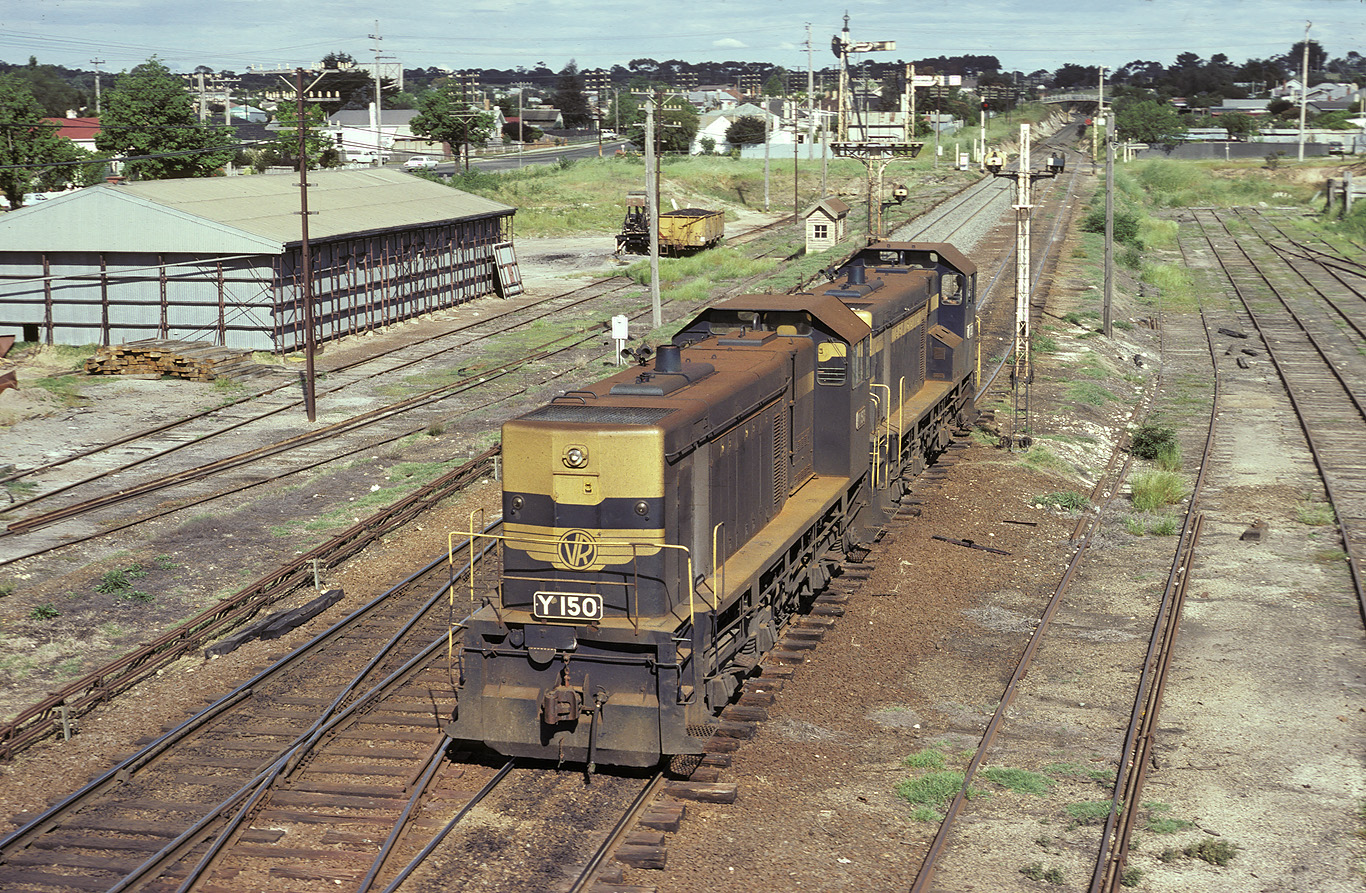
ABOVE: A pair of Y class on an up goods shunts at Stawell in this photo taken looking east from the footbridge. The weighbridge cabin can be seen above the second Y class. Nov 3 1981.
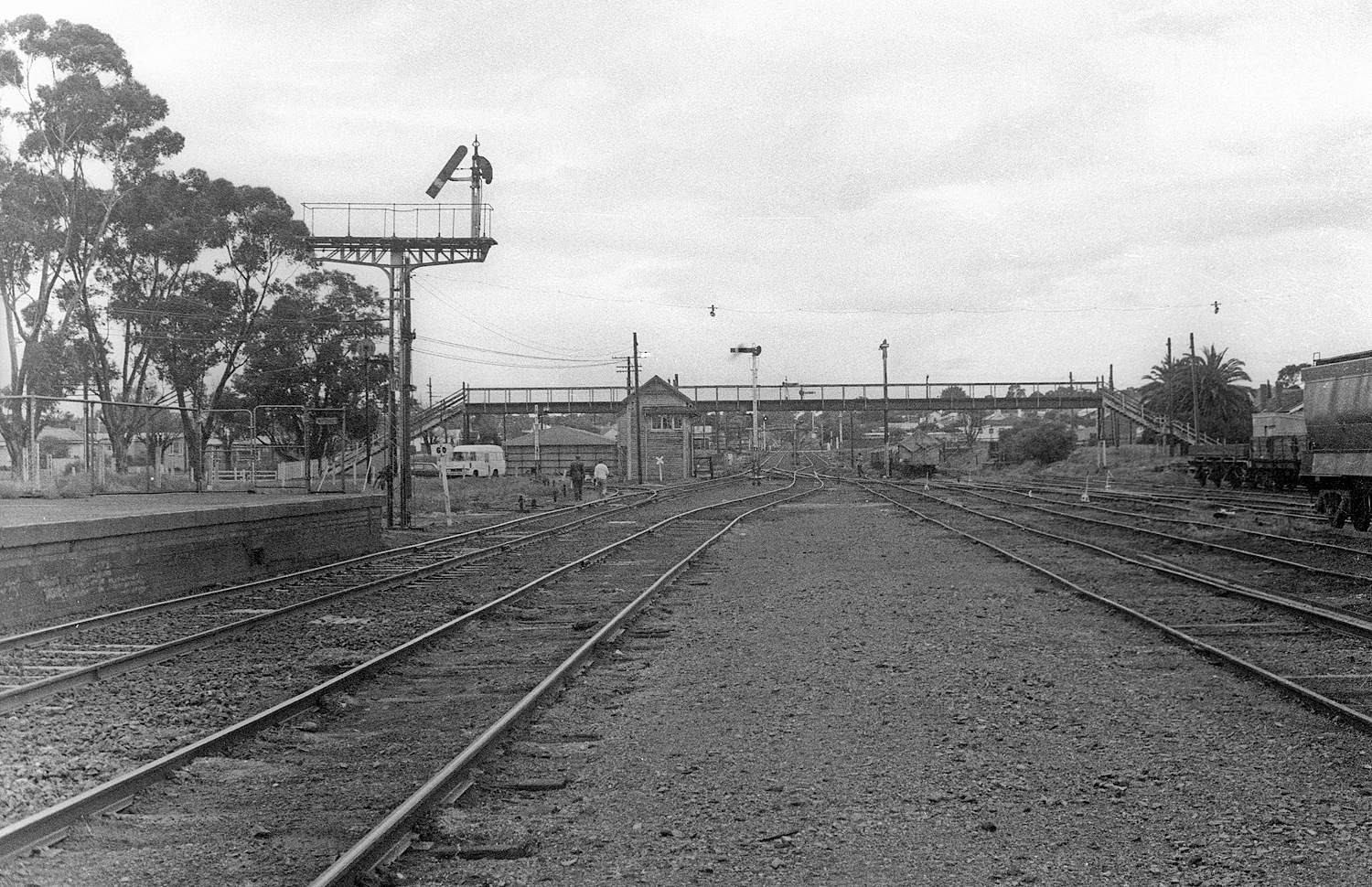
ABOVE: Looking east with Stawell A box on the left. (photo courtesy David Langley)
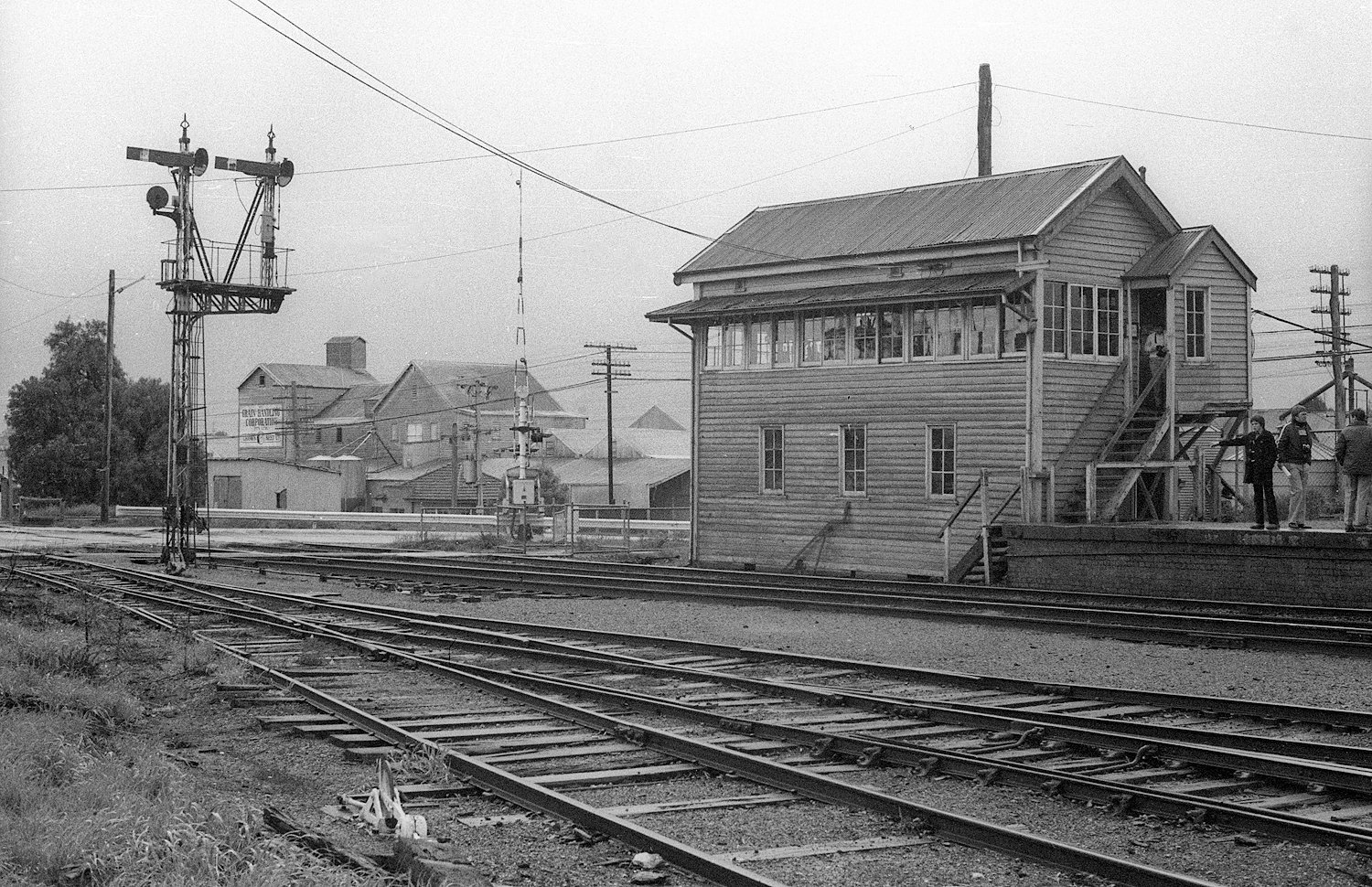
ABOVE: View of Stawell B signalbox and the newly installed boom gates at the down end of the yard. These booms replaced interlocked gates at Seaby St in Oct 1978. (photo courtesy David Langley)
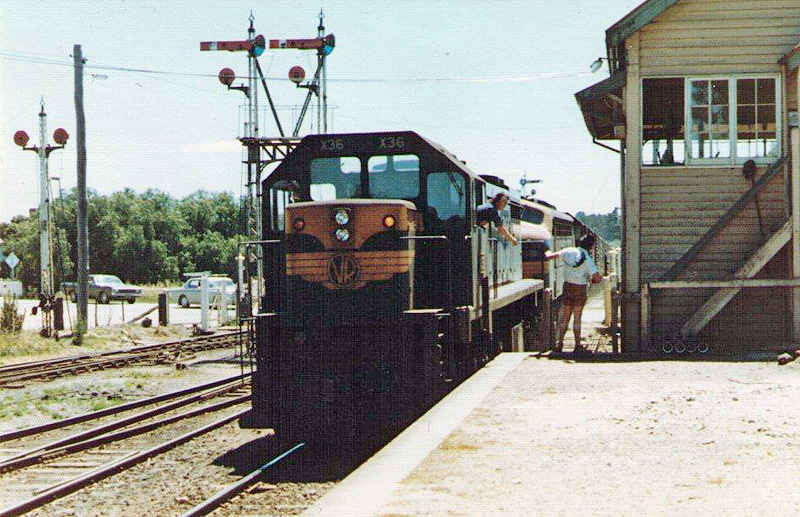
ABOVE: The fireman on an up goods hands the staff up to the signalman at B box, circa mid 1970's.
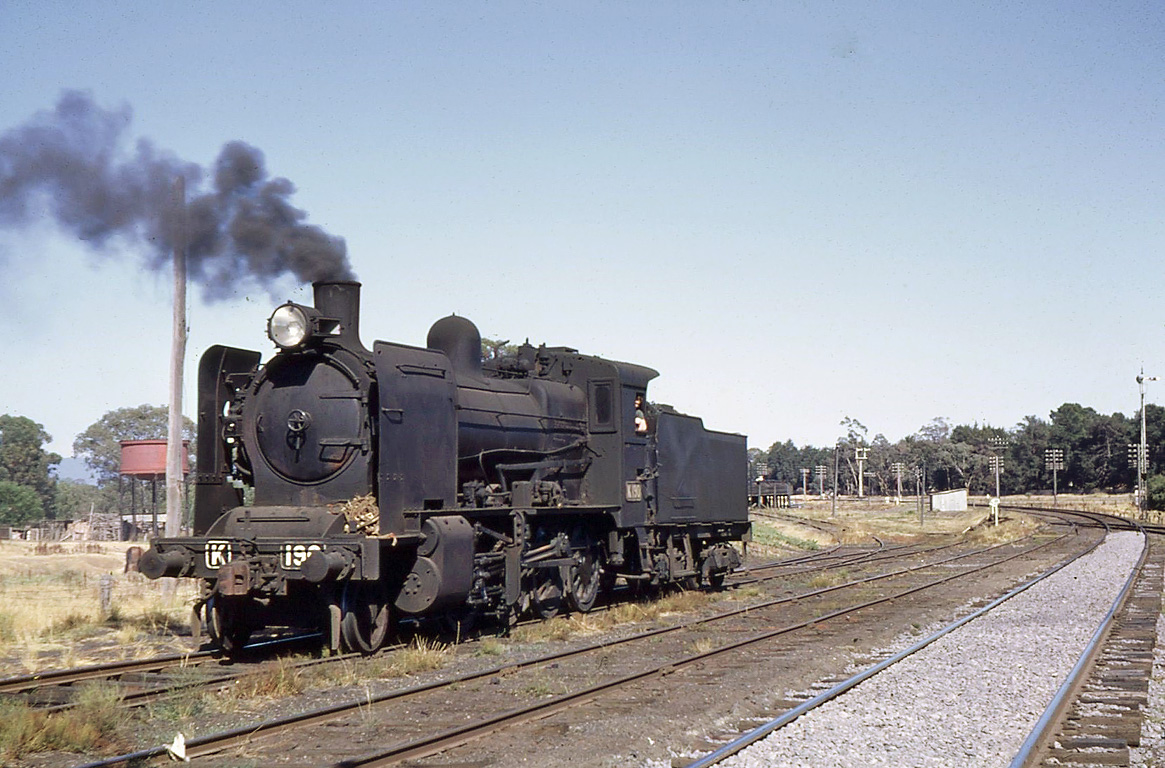
ABOVE: K 190 comes "off the pit" at Stawell. The coal stage can be seen just behind the tender. The track next to the loco was the old Grampians line. Long after the lines closure it was still known officially as "Grampians Siding" The newly ballasted track on the right is the mainline curving away towards Adelaide. Stawell had a pilot till quite late in the steam era as it doubled as a bank engine for up trains, Jan 1968. (photo courtesy Doug Miles)
BELOW: One year later K 190 is still on yard pilot duties at Stawell, this view, taken from Stawell B Box, shows the loco going over the Seaby street level crossing which was protected by interlocked gates. (photo courtesy Doug Miles)
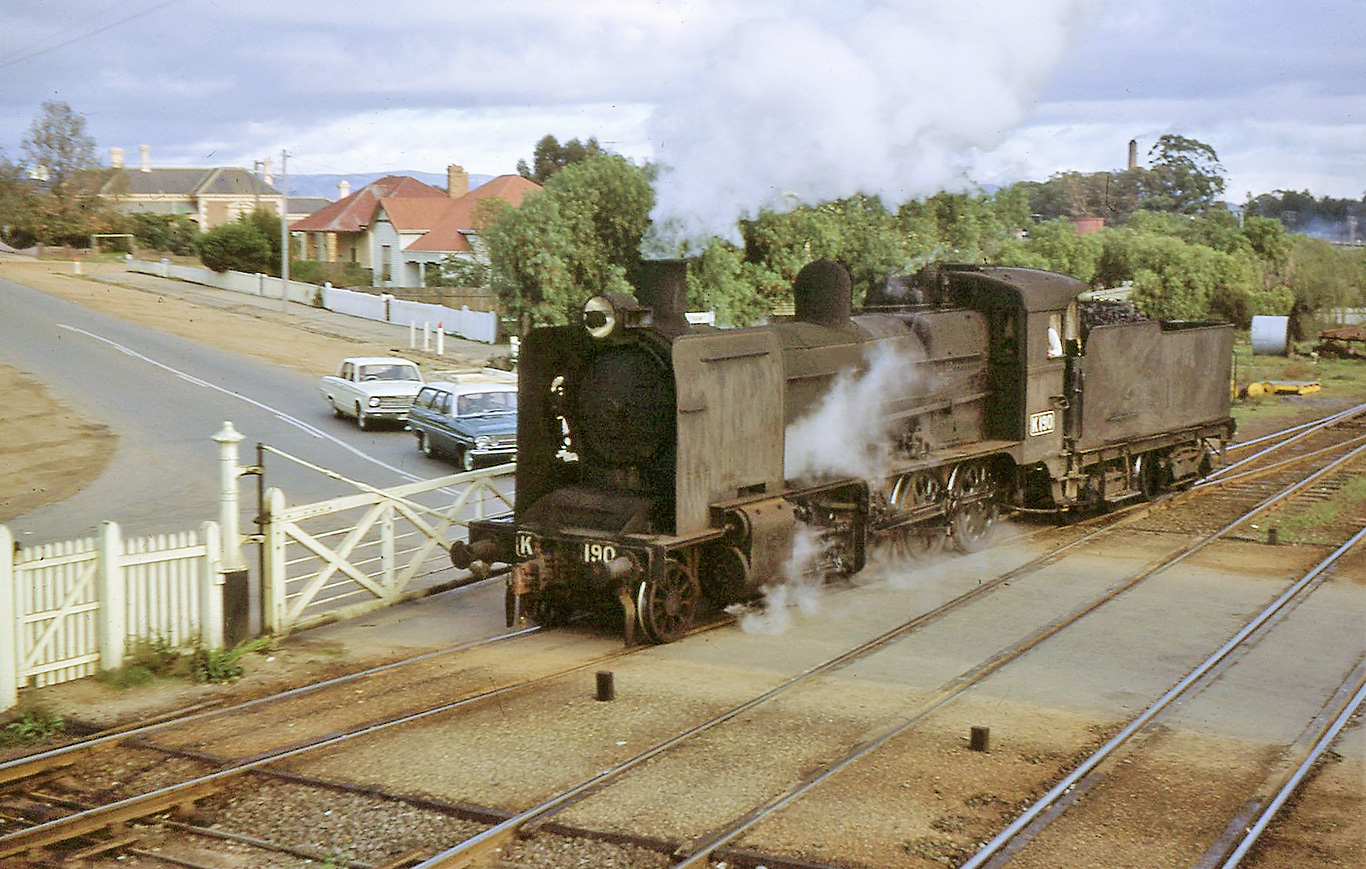
BELOW: The following three photos shows an up goods departing Stawell with N 456 on the front and D3 683 pushing hard on the rear. 1962. (3 photos courtesy Bob Wilson)
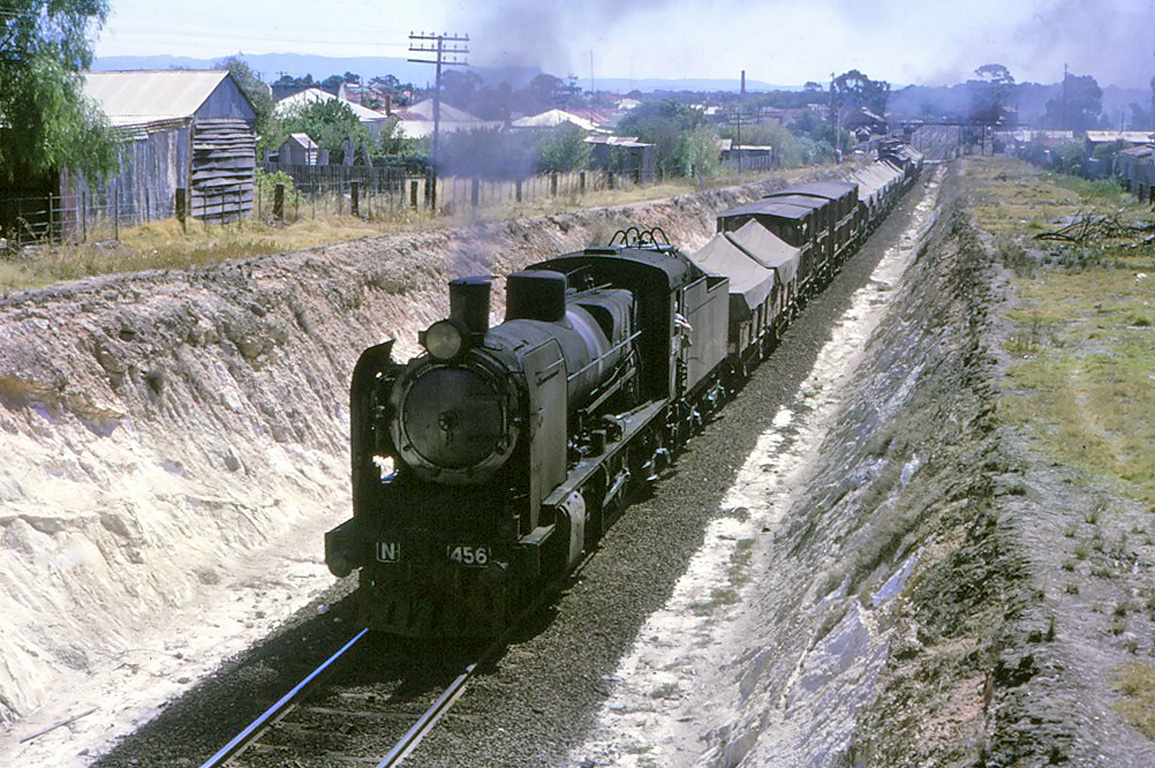
This is the content for Layout P Tag
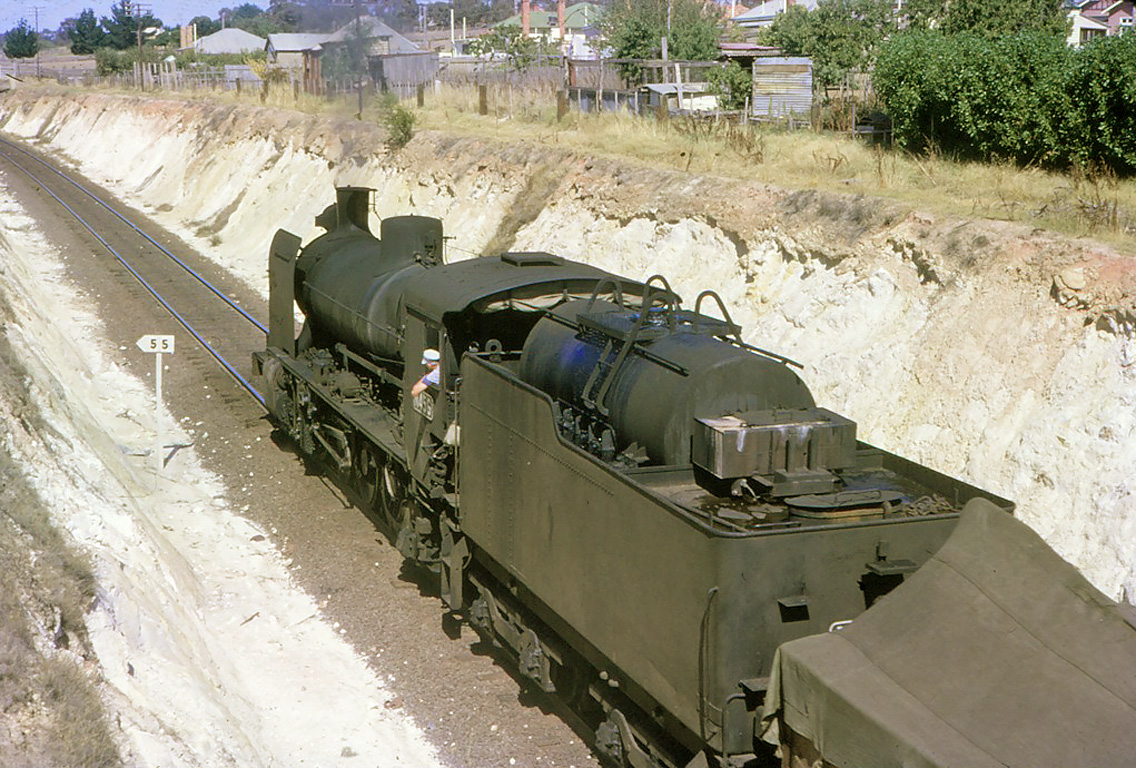
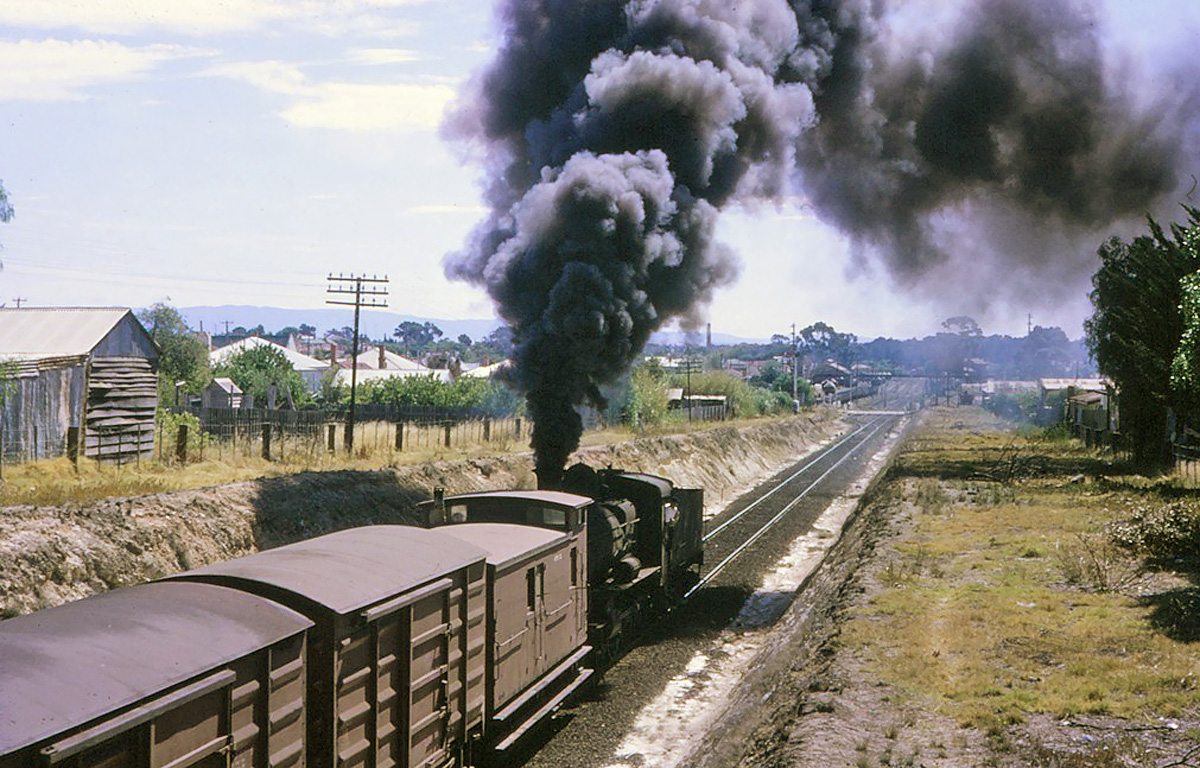
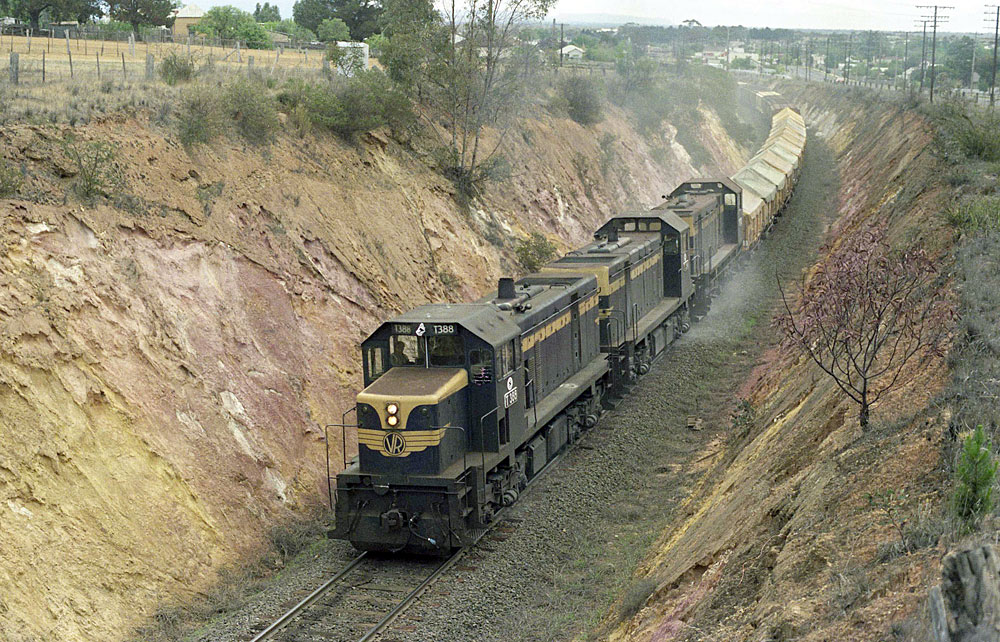
ABOVE & BELOW: As built, eastbound trains leaving Stawell faced a 1 in 50 grade that started as soon as you left Stawell, regrading saw the grade eased to 1 in 62 but with VR's habit of assigning just enough locos for the task it was always a tough climb and bankers were used right up to the end of the steam era. This up grain train is being led by a T class which would mean it would have slowed down through Stawell to exchange staffs and it looks like it is making hard work of the climb judging by the sand being applied to the rails. The locos are T 388 - T 384 - Y 160 and the date is Oct 18 1982. (photos courtesy John Ward)
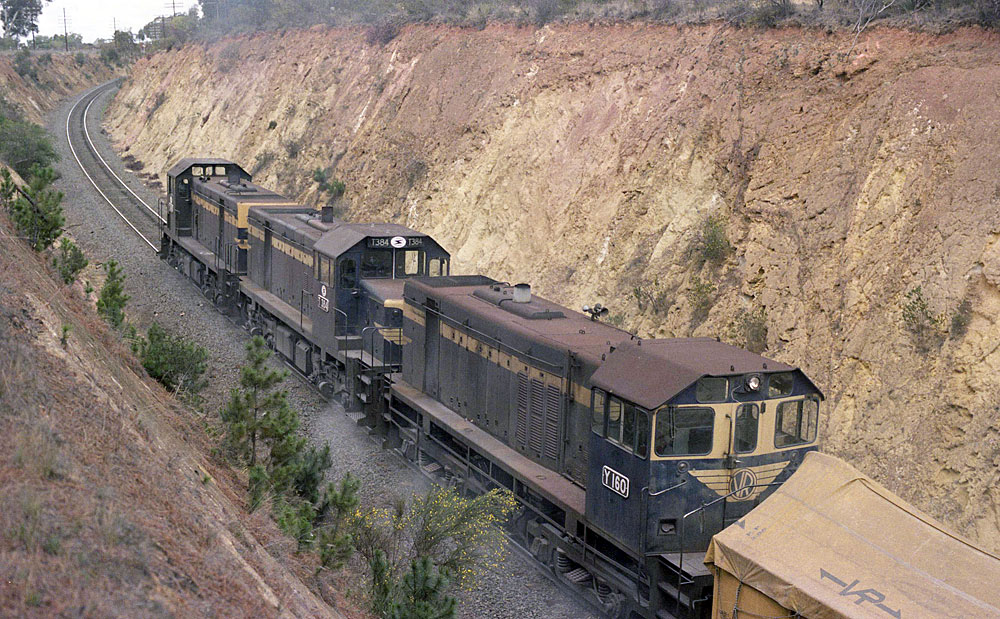
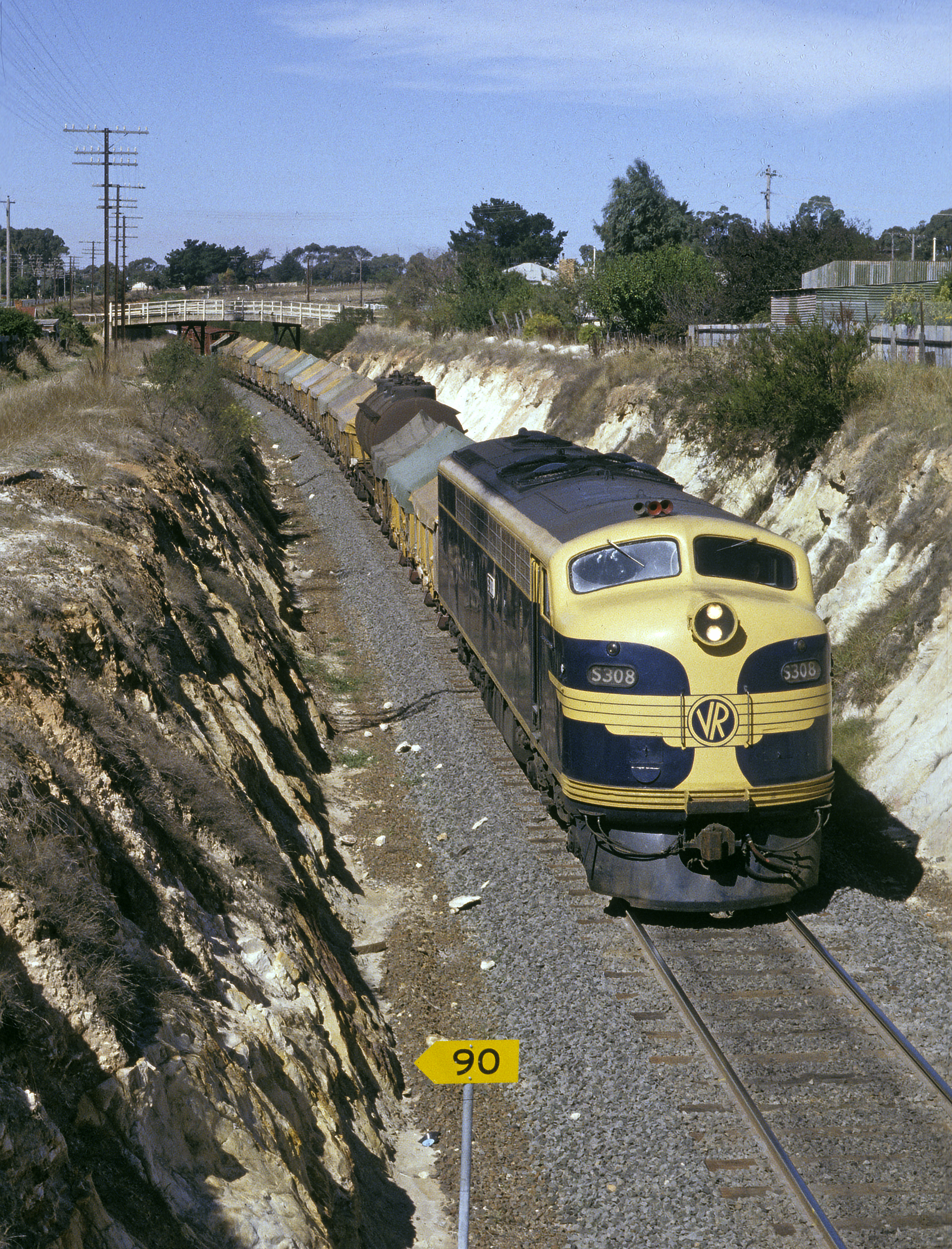
ABOVE: 9103 was a mid morning goods that departed Ararat with any loading offering, empty wheat wagons, cattle/sheep trucks, oil tanks, you name it. Here it is seen dropping downgrade into Stawell. While waiting to take this photo I watched the ganger remove the old 55 mph curveboard and erect the shiny new 90 km/h curveboard seen. 1981
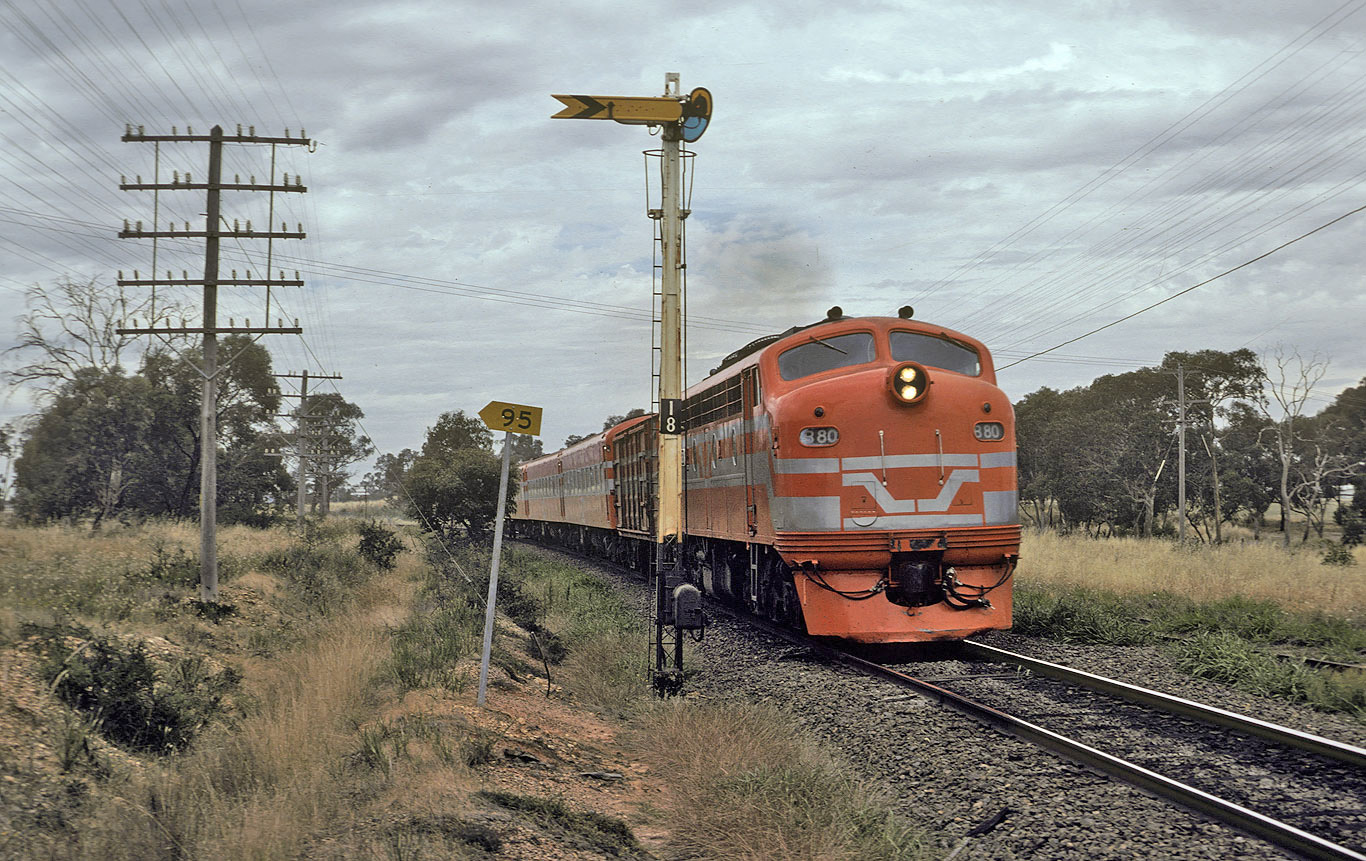
ABOVE: The down Horsham service has departed Stawell and is passing Stawell's up distant signal which was operated by Stawell B box. The remains of the Grampians line can be seen amongst the weeds on the right. Dec 1981.
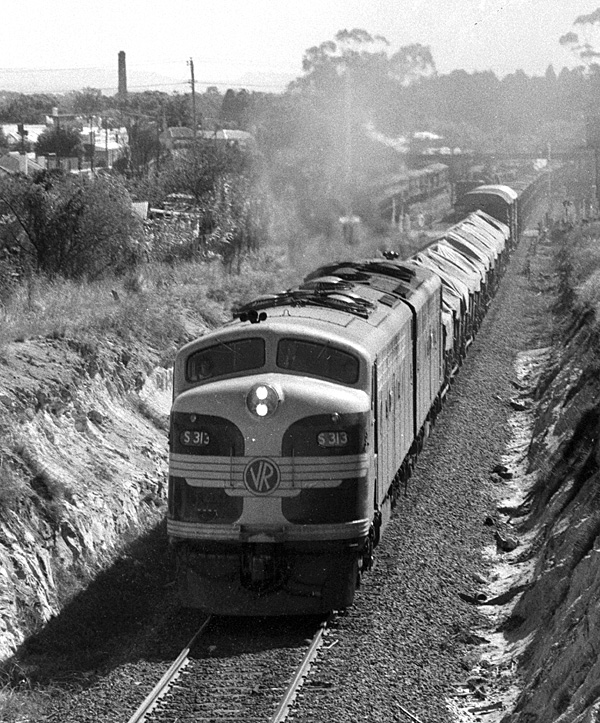
ABOVE: A classic double S class combination in full throttle at the start of the climb up Stawell bank on an up train. 1981.
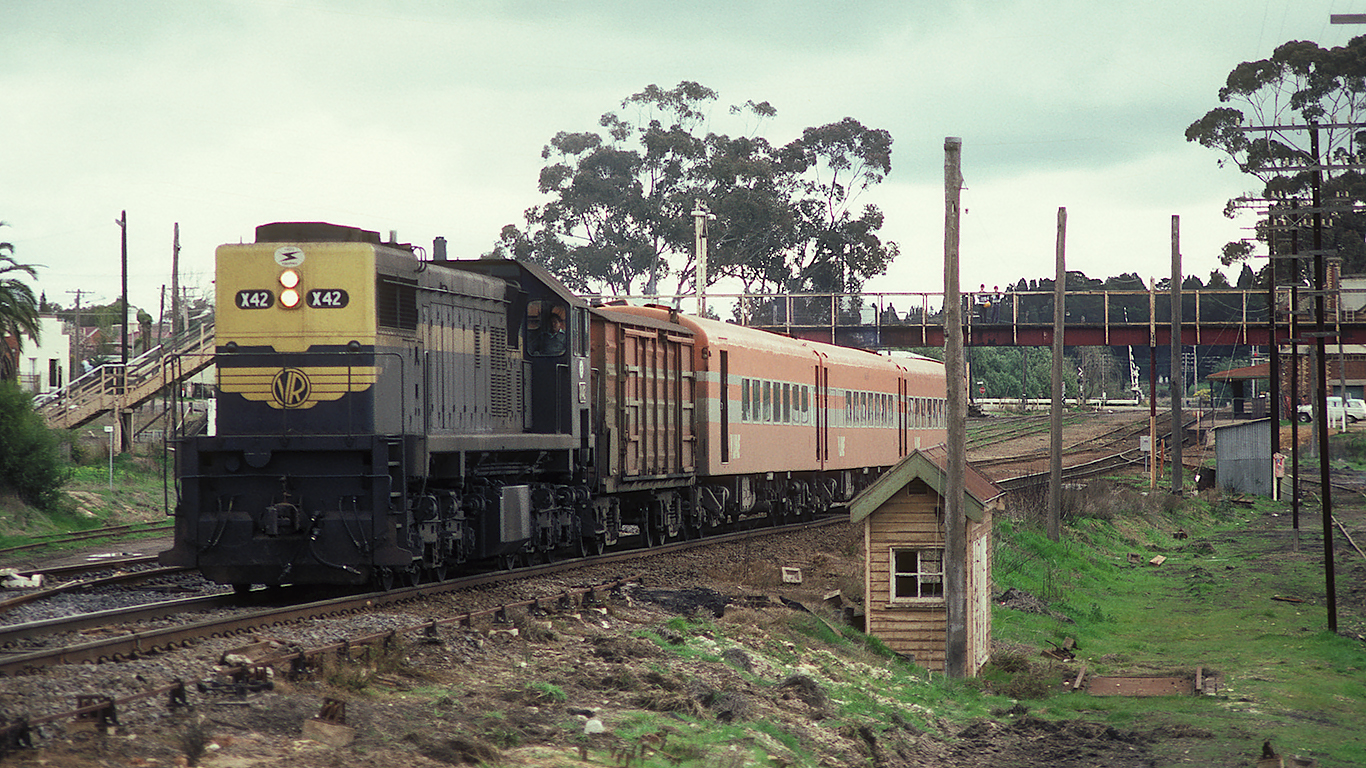
ABOVE: The up Horsham pass. departs Stawell, both signal boxes have been demolished and the track is now controlled by CTC. The weighbridge hut remains even though the track to it has been pulled up. Aug 24 1985.
DEEP LEAD to DIMBOOLA
